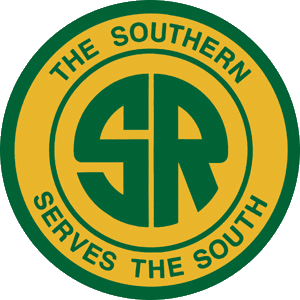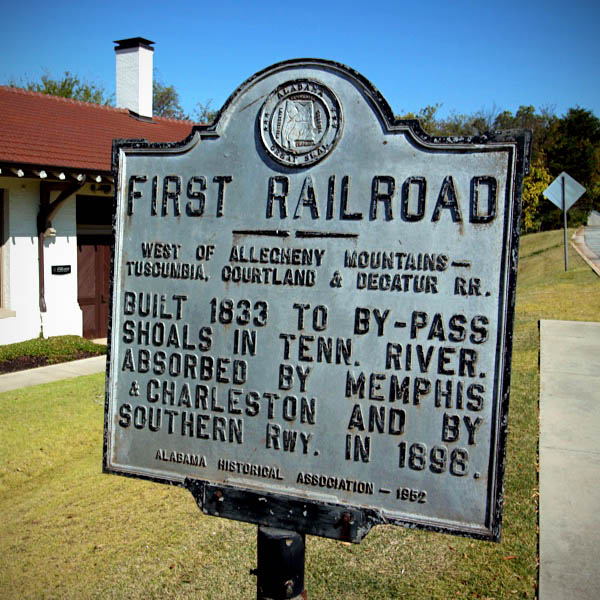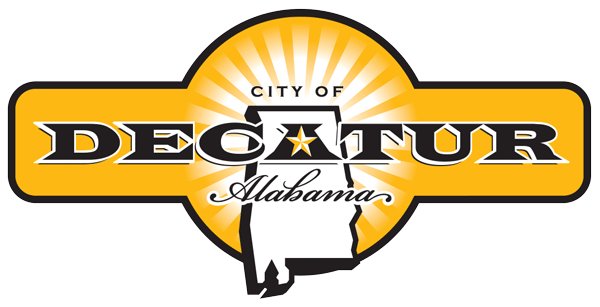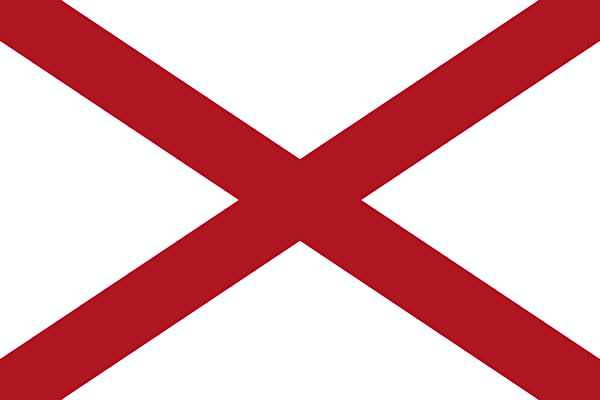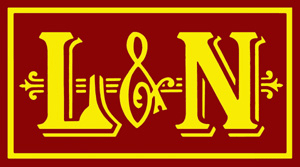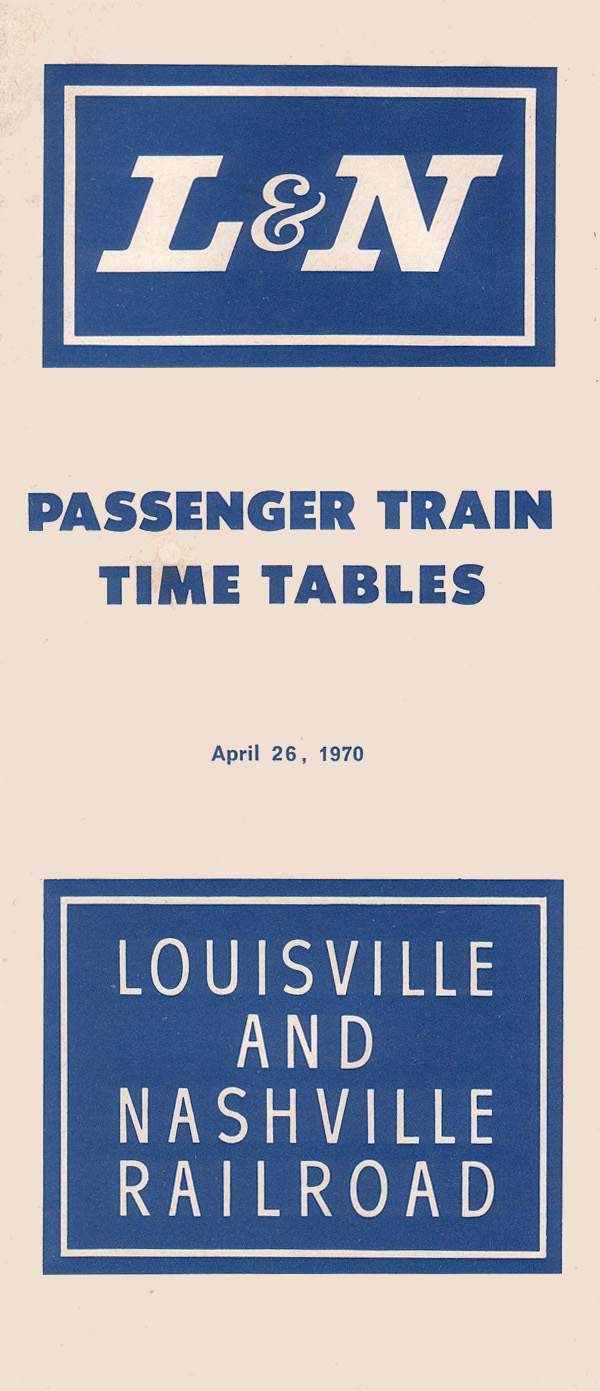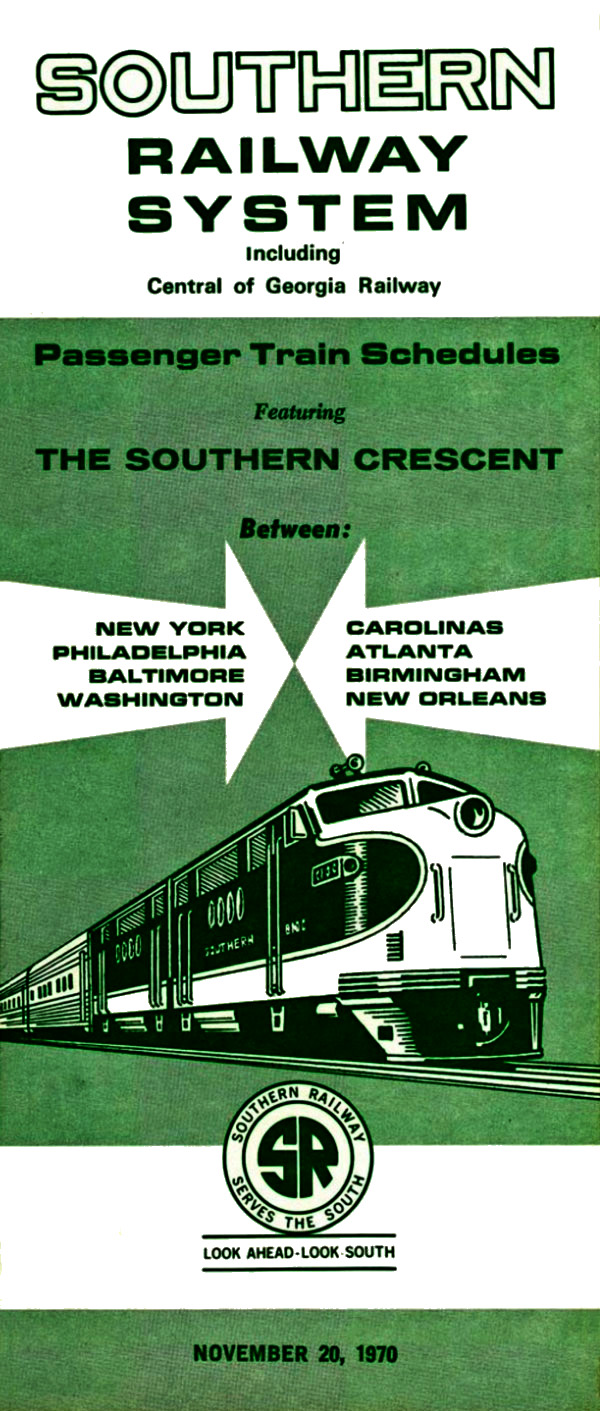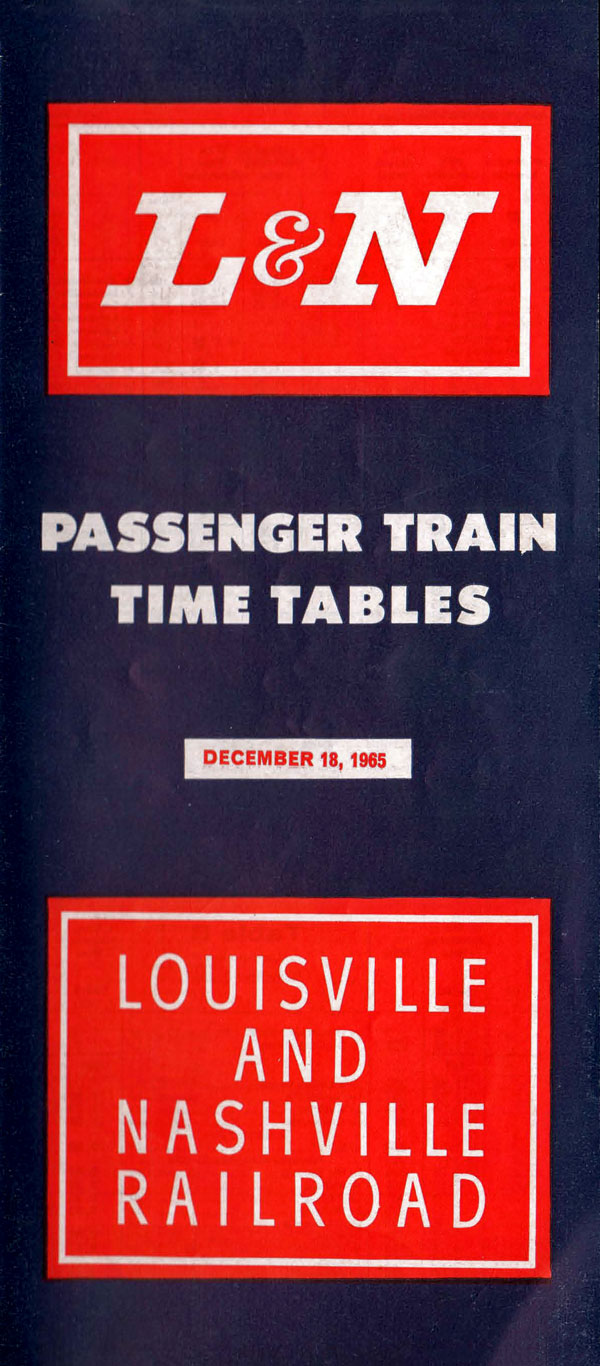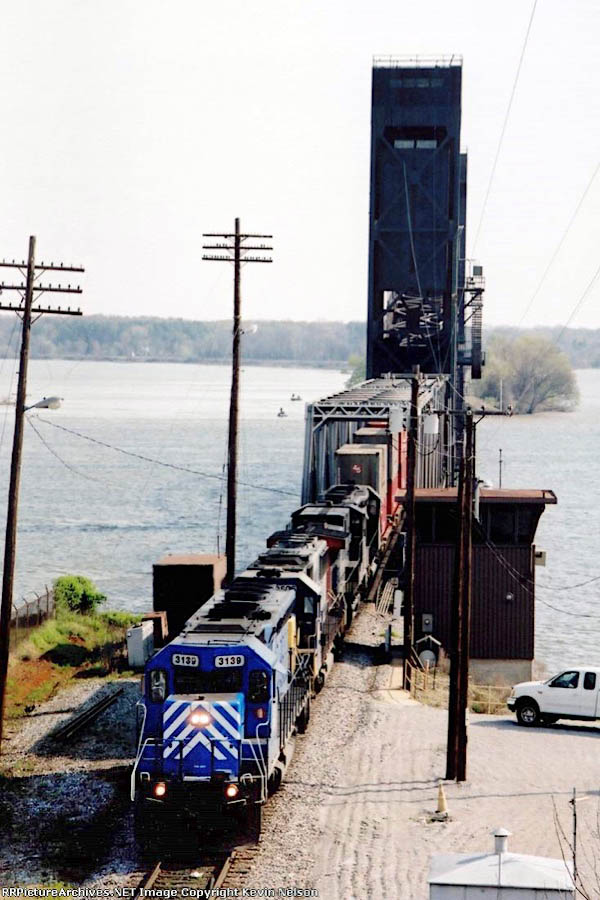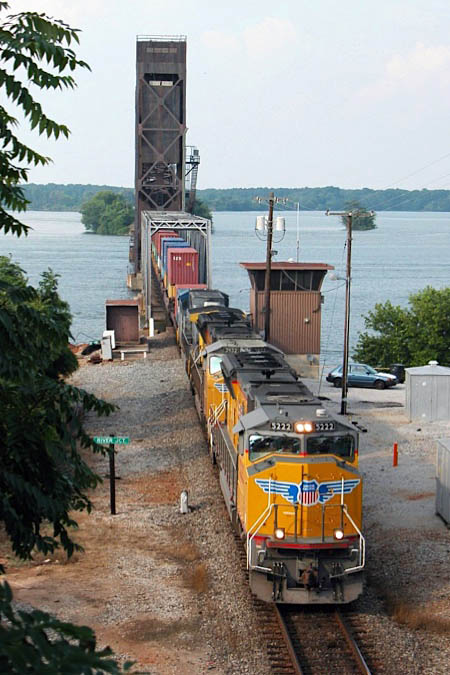
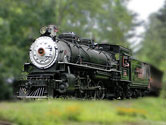








Decatur Historic Union Depot
|
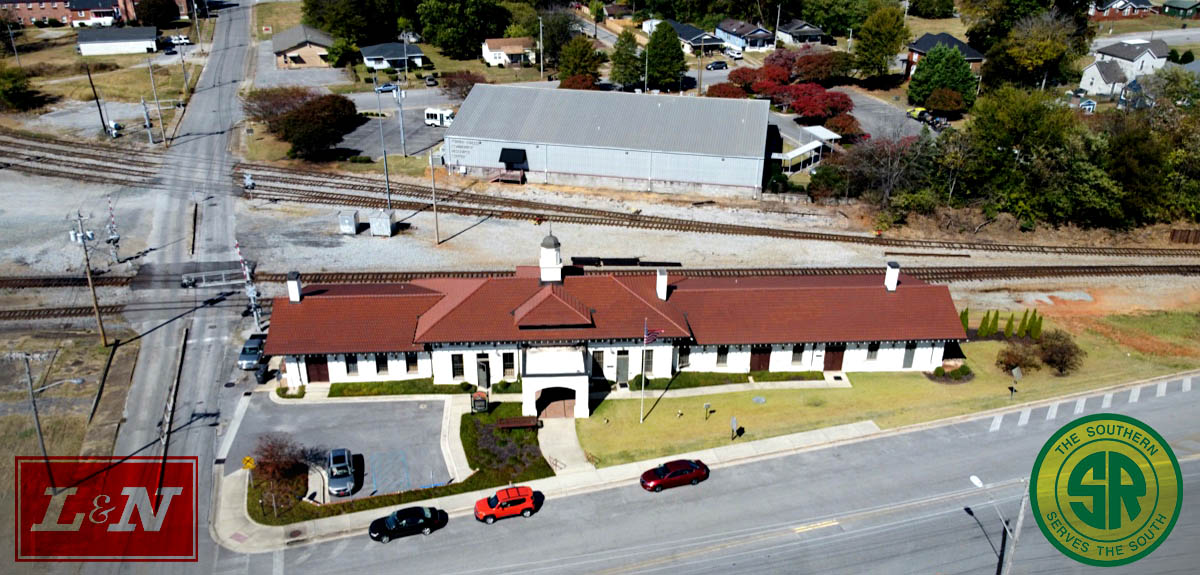
Decatur, Al / Oct 2022 / RWH

 he Depot was Alabama Main Street’s 2015-2016 Historic Preservation Project of the Year. The historic Decatur union passenger depot was built by the Southern Railway in 1905. It is a symbol of the city’s rich railroad heritage which extends back to the 1830s when the first railroad west of the Allegheny Mountains, Tuscumbia, Courtland, and Decatur was built. A union depot was the result of the joint use of the depot by two railroads, the Southern and the Louisville & Nashville railroads.
he Depot was Alabama Main Street’s 2015-2016 Historic Preservation Project of the Year. The historic Decatur union passenger depot was built by the Southern Railway in 1905. It is a symbol of the city’s rich railroad heritage which extends back to the 1830s when the first railroad west of the Allegheny Mountains, Tuscumbia, Courtland, and Decatur was built. A union depot was the result of the joint use of the depot by two railroads, the Southern and the Louisville & Nashville railroads.
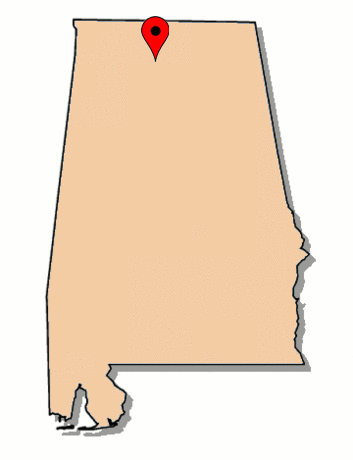
 he Decatur Historic Union Depot and Railroad Museum is located in its namesake city, along the southern banks of the Tennessee River in north central Alabama. Decatur's history as a railroad town precedes the Civil War, and throughout the 20th century two major southern Fallen Flags met in town and crossed the Tennessee River on a shared bridge. Thus the Louisville & Nashville and Southern Railway shared the depot in Decatur, with several named trains making daily stops in the heyday of mainline passenger service. The depot was erected by the Southern Railway in 1905. Final train departures before Amtrak were Southern's Tennessean in 1968 and Louisville & Nashville's Pan-American in 1971. Amtrak's Floridian (Chicago-Miami) served the station until 1979, when that route was cancelled. However, freight traffic remains active at the depot and across the Tennessee River with Norfolk Southern's Chattanooga-Memphis mainline and CSX Transportation's Nashville-Birmingham corridor. The depot was listed on the National Register of Historic Places in 1980. The building was renovated by the city in 2015. As of 2022, a precinct of the Decatur Police Department occupies the major portion, while the railroad museum inhabits the western end. The state of Alabama has actively advertised this and several other historic depots and sites with its North Alabama Train Depots Trail.
he Decatur Historic Union Depot and Railroad Museum is located in its namesake city, along the southern banks of the Tennessee River in north central Alabama. Decatur's history as a railroad town precedes the Civil War, and throughout the 20th century two major southern Fallen Flags met in town and crossed the Tennessee River on a shared bridge. Thus the Louisville & Nashville and Southern Railway shared the depot in Decatur, with several named trains making daily stops in the heyday of mainline passenger service. The depot was erected by the Southern Railway in 1905. Final train departures before Amtrak were Southern's Tennessean in 1968 and Louisville & Nashville's Pan-American in 1971. Amtrak's Floridian (Chicago-Miami) served the station until 1979, when that route was cancelled. However, freight traffic remains active at the depot and across the Tennessee River with Norfolk Southern's Chattanooga-Memphis mainline and CSX Transportation's Nashville-Birmingham corridor. The depot was listed on the National Register of Historic Places in 1980. The building was renovated by the city in 2015. As of 2022, a precinct of the Decatur Police Department occupies the major portion, while the railroad museum inhabits the western end. The state of Alabama has actively advertised this and several other historic depots and sites with its North Alabama Train Depots Trail.

RWH
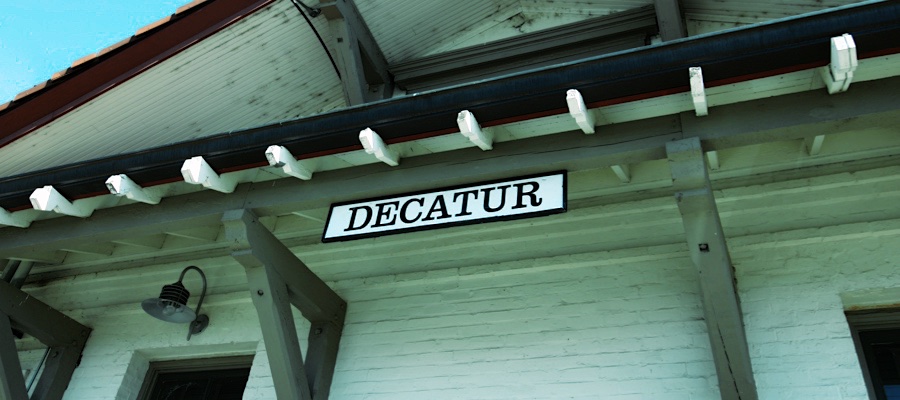
Oct 2022 / RWH
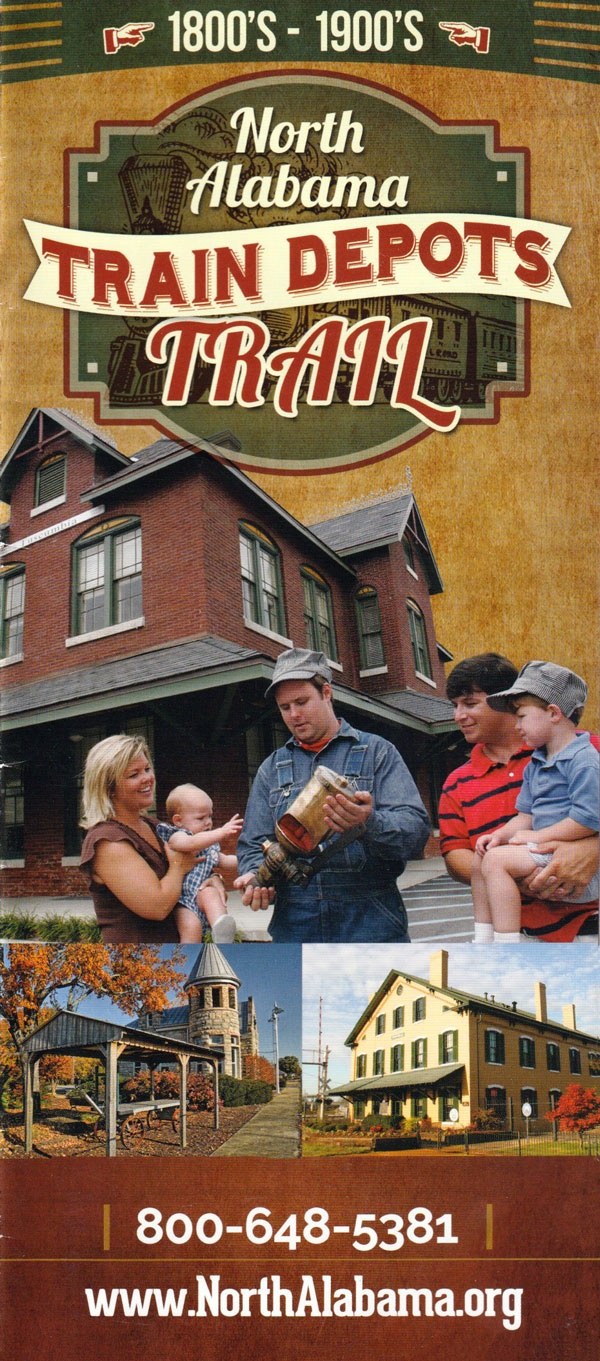
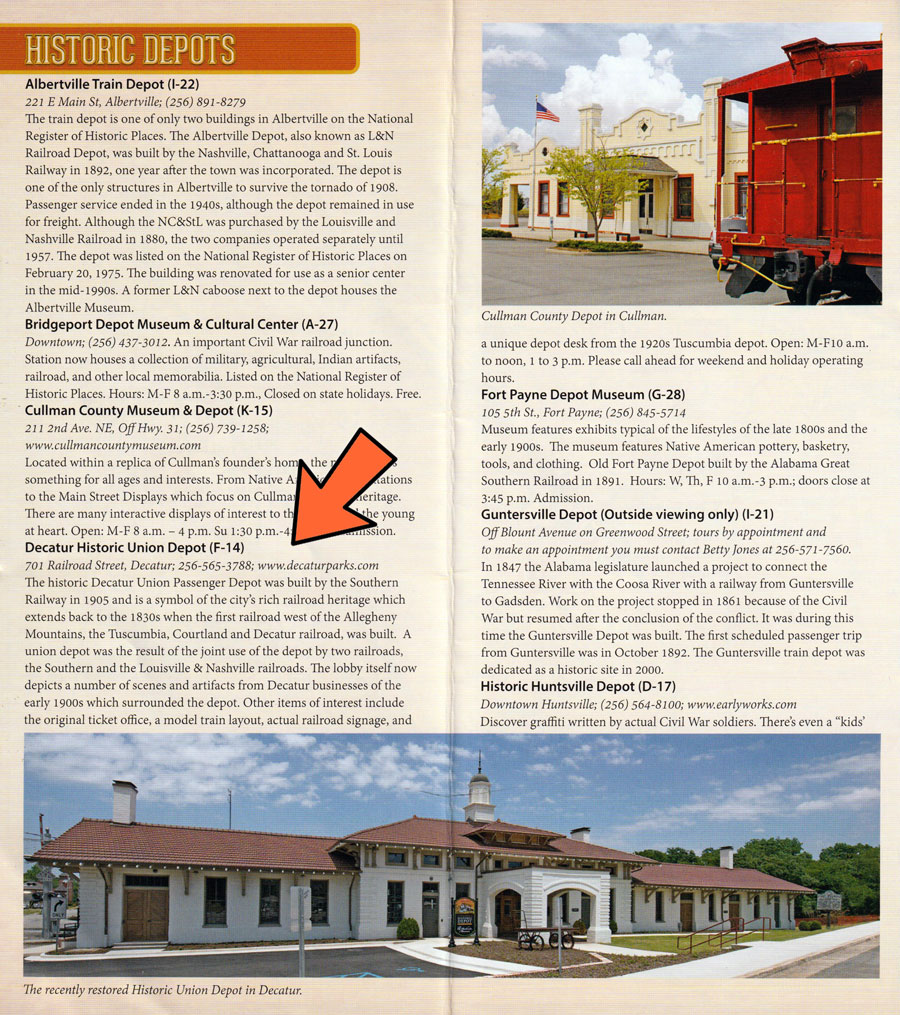
brochure / collection

North Alabama Train Depots Trail brochure map / adapted RWH

See also our other North Alabama depot scrapbooks:


1910 Official Guide map / collection
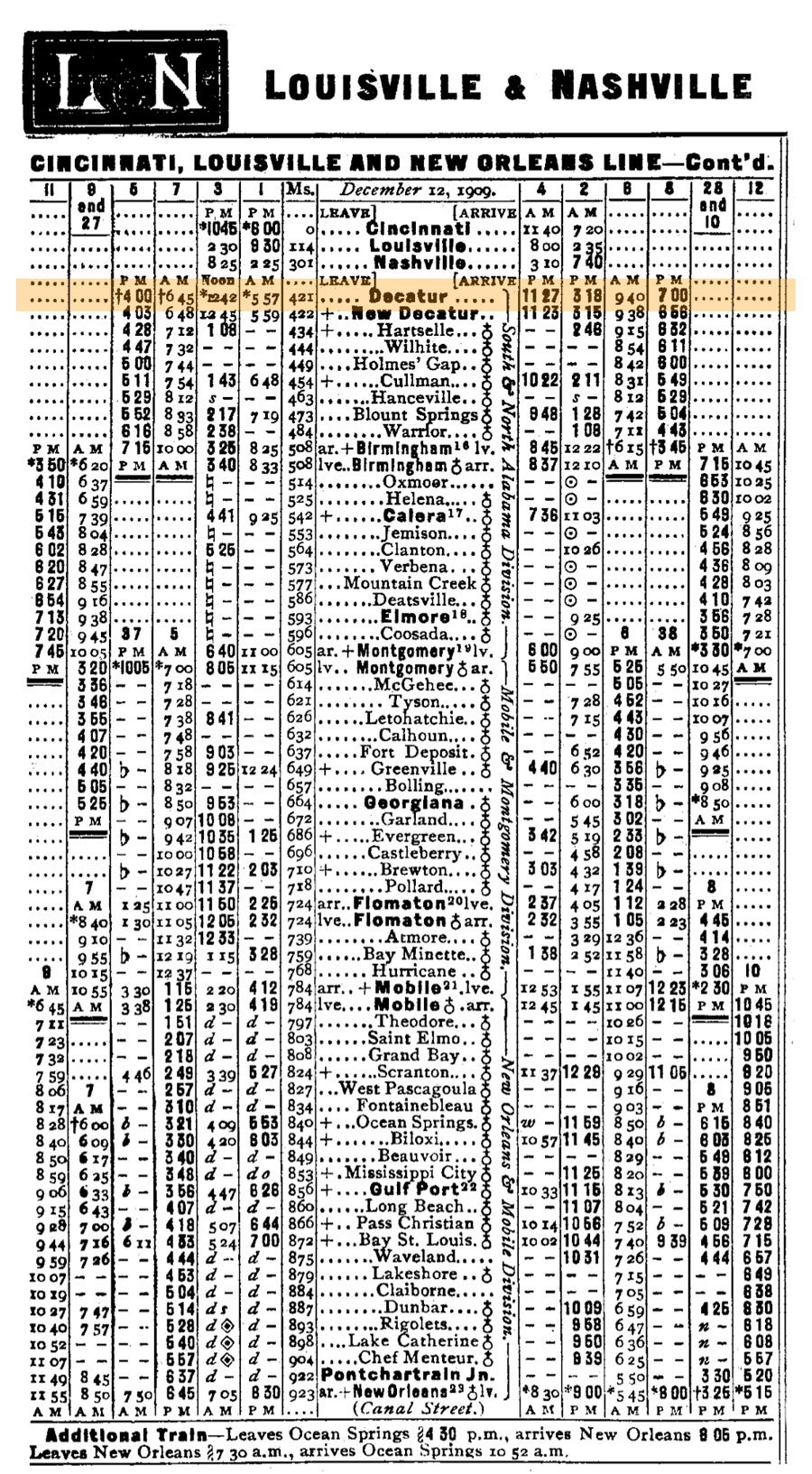
1910 Official Guide ad / collection

1910 Official Guide ad / collection

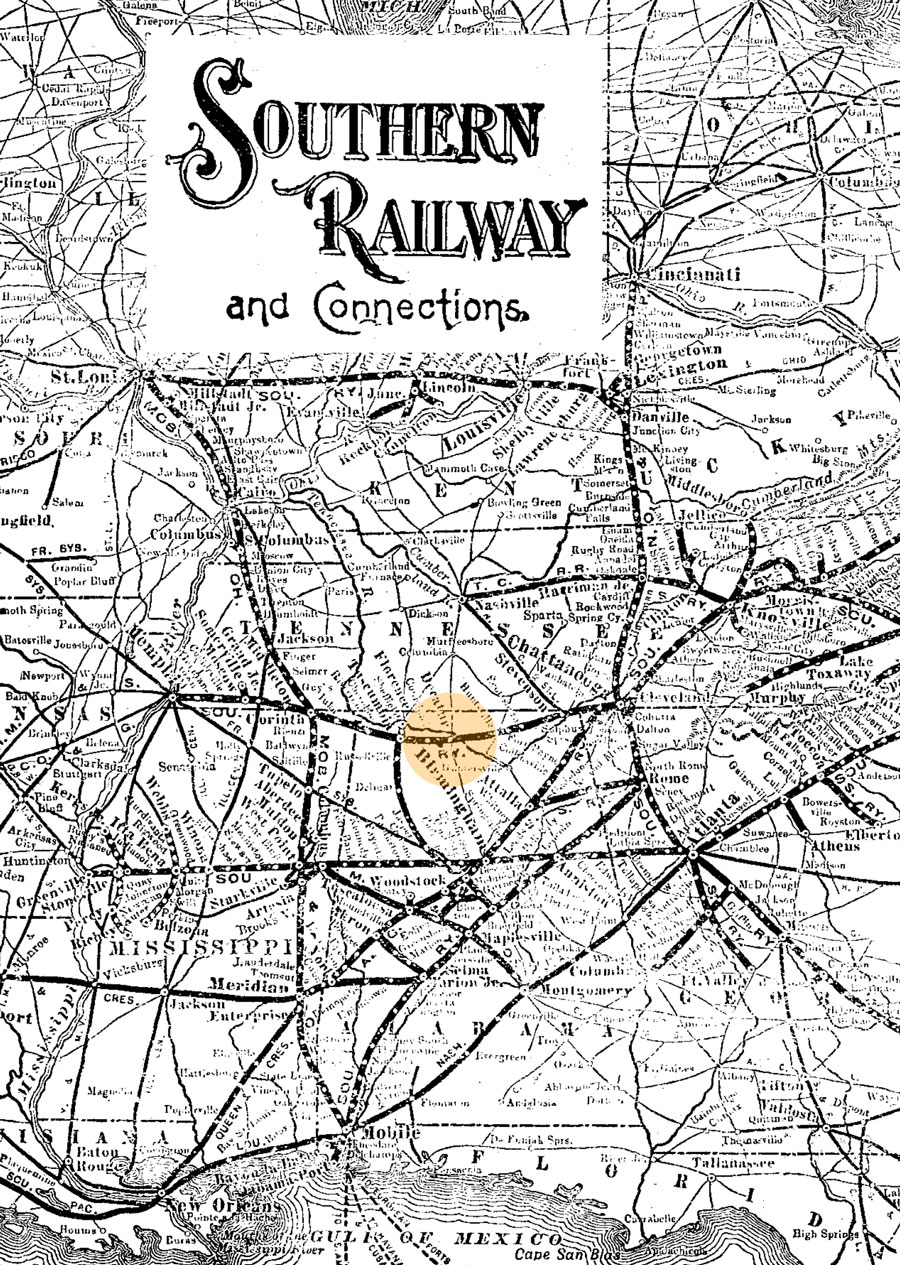
1910 Official Guide map / collection
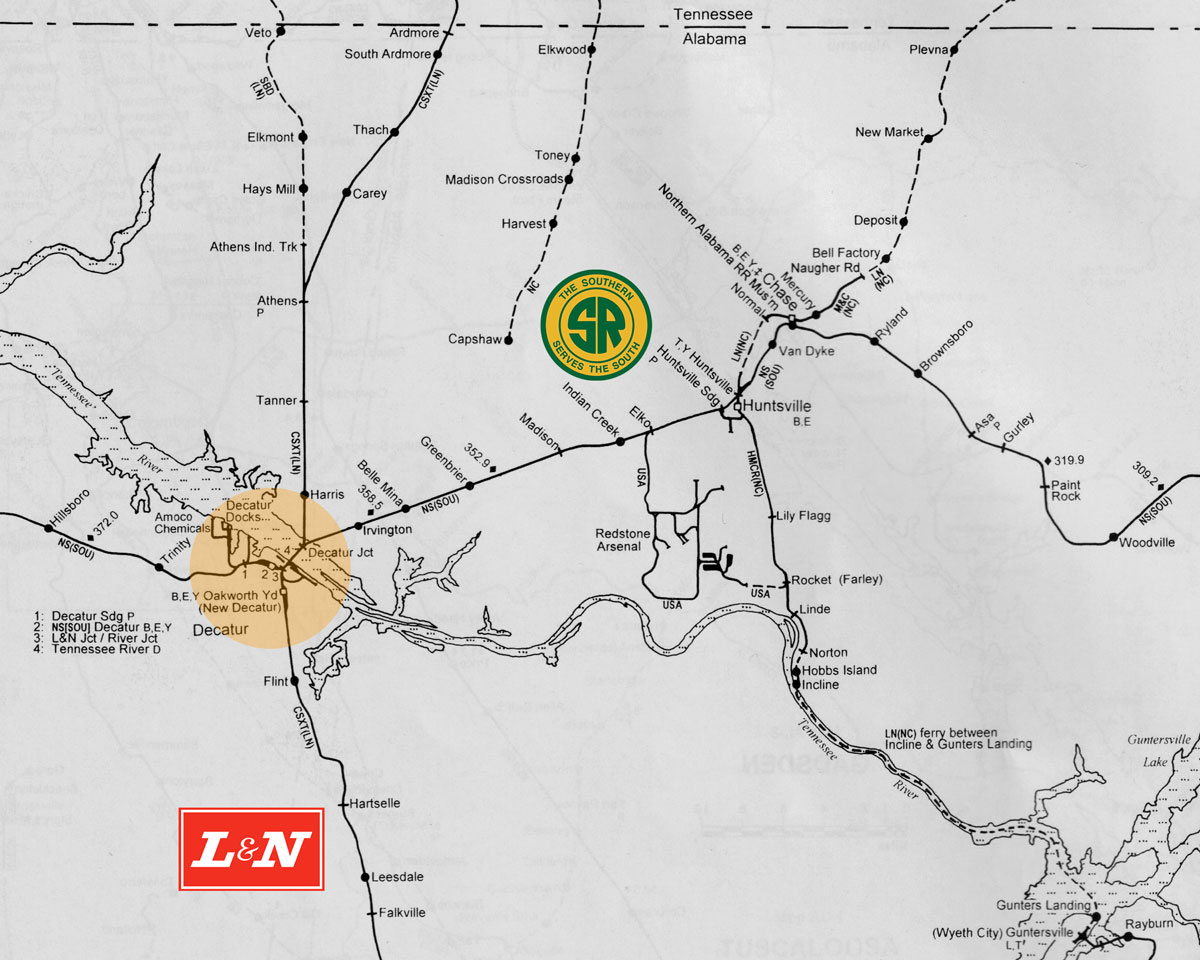
from SPV Comprehensive Railroad Atlas / collection / adapted RWH
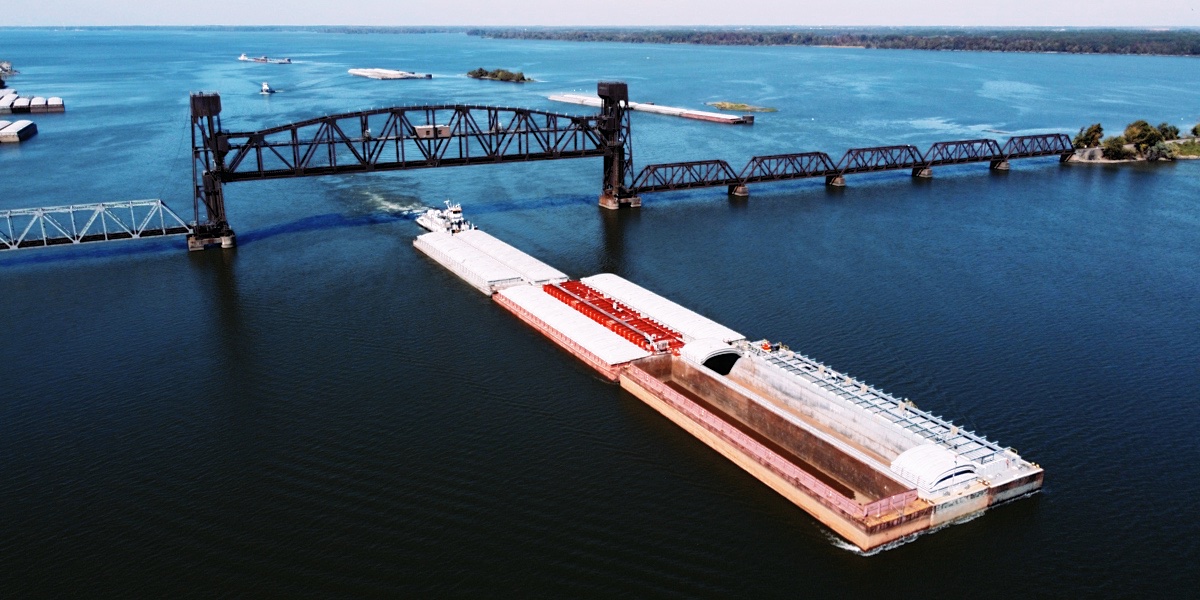
Decatur, Al / Oct 2022 / RWH
 Union Depot
Union Depot
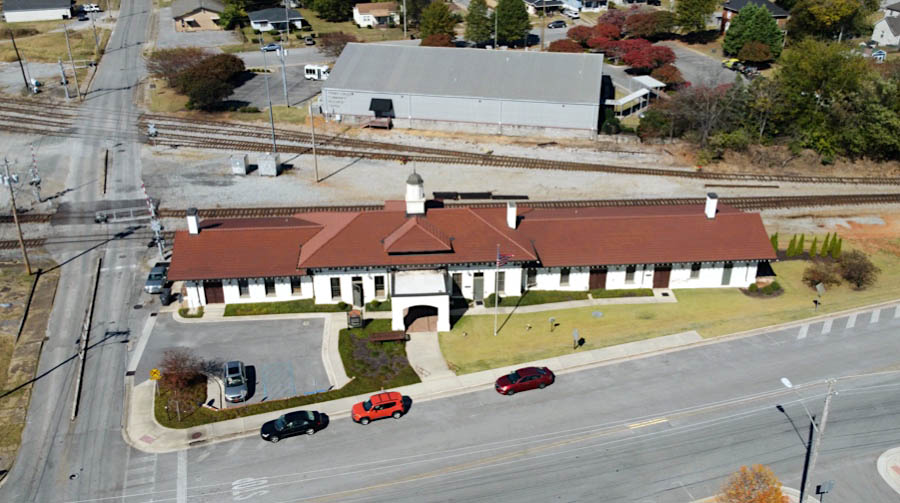
Decatur, Al / Oct 2022 / RWH

Click to see the Decatur Historic Union Depot plotted on a Google Maps page

Decatur, Al / Oct 2022 / RWH
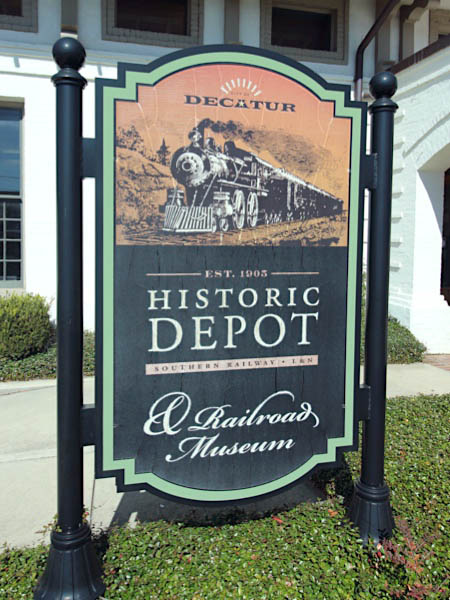


Oct 2022 / RWH
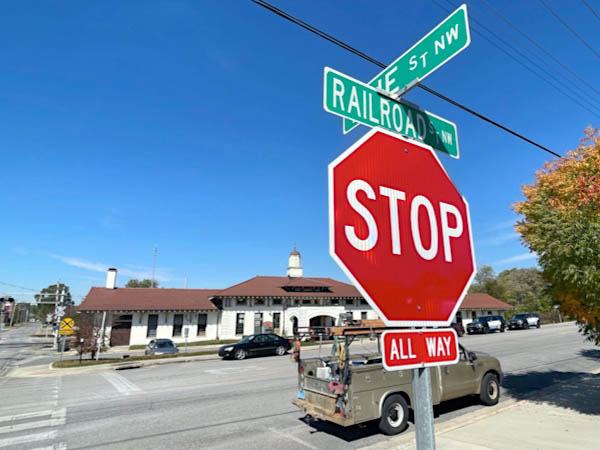
Oct 2022 / RWH
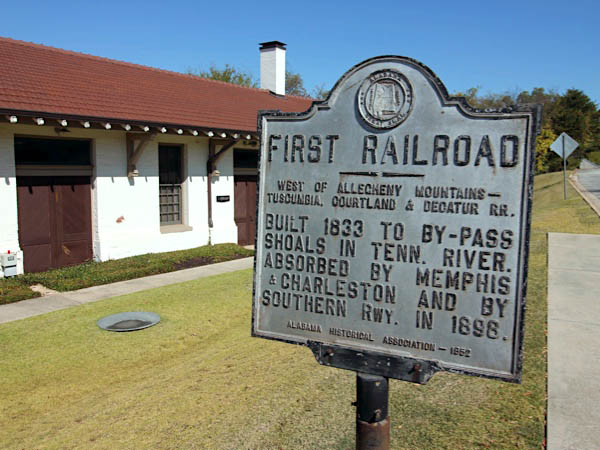
Oct 2022 / RWH

Decatur, Al / Oct 2022 / RWH
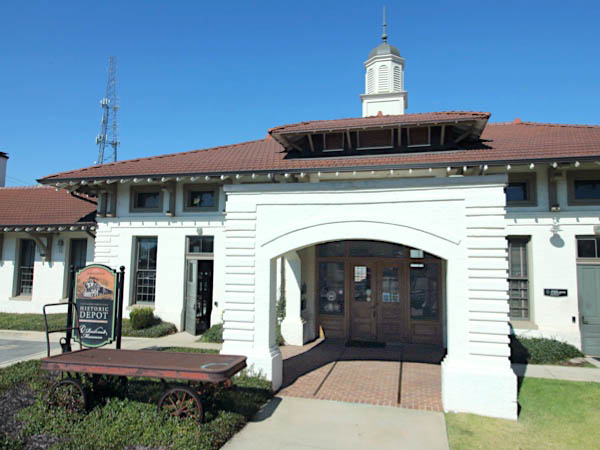
Decatur, Al / Oct 2022 / RWH
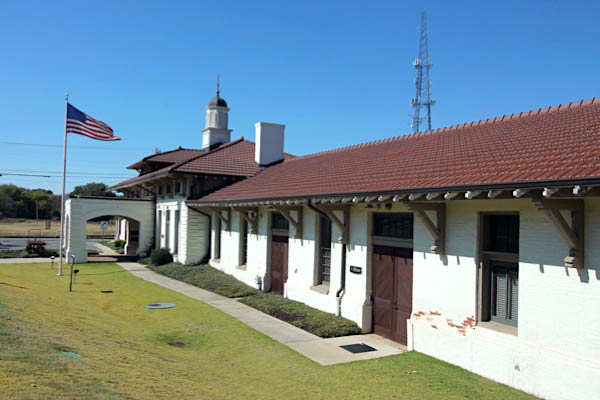
Oct 2022 / RWH
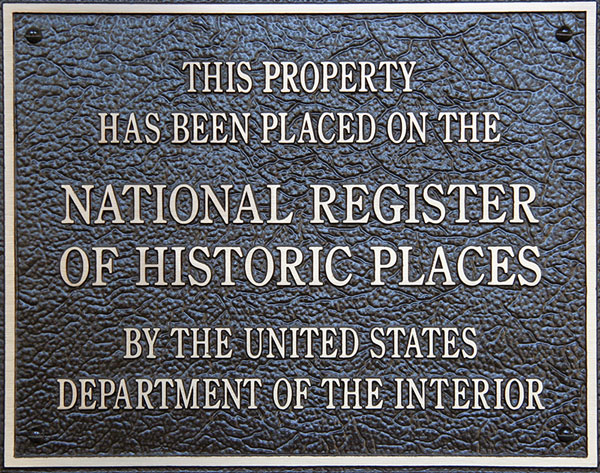

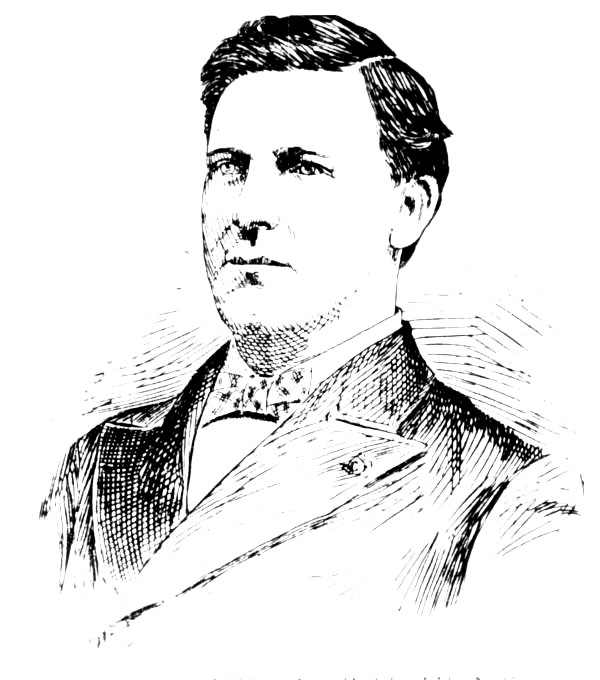 Before the outbreak of the American Civil War, the Memphis & Charleston (present-day Norfolk-Southern) and what would later become the Louisville & Nashville (L&N, present-day CSX) Railroads intersected at Decatur, making the city strategically important during the war. In 1889, the L&N Railroad established repair facilities in Decatur that employed 2,500 people and helped to spur a tremendous population growth after 1900. In 1905, during what railroad historians have termed the "Golden Age of Railroad Travel," a new railroad depot was built by the Southern Railway in Decatur, replacing two facilities inadequate for the increasing amount of railroad traffic into the area. The new depot became known as Union Depot because it was used both by Southern Railway and the L&N. It was most likely designed (or at least overseen by) Kentucky-born Frank Pierce Milburn, one of the most famous architects in the South, who served as the chief architect for the Southern Railway. Decatur is believed to be his only design in Alabama. Planned in the Spanish Revival style, the building includes bricks painted white with quoins (pronounced "koyns"), or decorative corner pieces, and a rectangular central section with a hipped roof and two narrower wings which include gabled roofs. The main entrance is covered by a porte-cochere with arched openings.
Before the outbreak of the American Civil War, the Memphis & Charleston (present-day Norfolk-Southern) and what would later become the Louisville & Nashville (L&N, present-day CSX) Railroads intersected at Decatur, making the city strategically important during the war. In 1889, the L&N Railroad established repair facilities in Decatur that employed 2,500 people and helped to spur a tremendous population growth after 1900. In 1905, during what railroad historians have termed the "Golden Age of Railroad Travel," a new railroad depot was built by the Southern Railway in Decatur, replacing two facilities inadequate for the increasing amount of railroad traffic into the area. The new depot became known as Union Depot because it was used both by Southern Railway and the L&N. It was most likely designed (or at least overseen by) Kentucky-born Frank Pierce Milburn, one of the most famous architects in the South, who served as the chief architect for the Southern Railway. Decatur is believed to be his only design in Alabama. Planned in the Spanish Revival style, the building includes bricks painted white with quoins (pronounced "koyns"), or decorative corner pieces, and a rectangular central section with a hipped roof and two narrower wings which include gabled roofs. The main entrance is covered by a porte-cochere with arched openings.

Decatur, Al / Oct 2022 / RWH
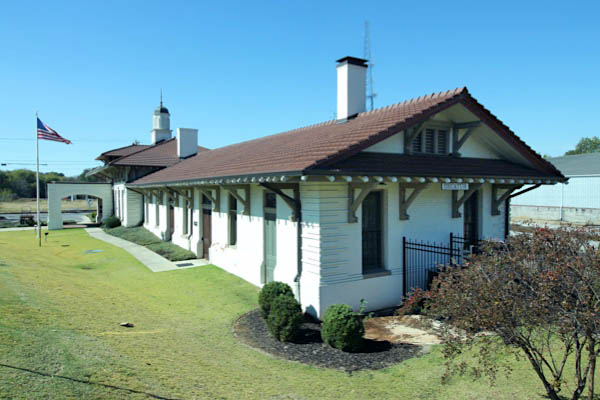
Decatur, Al / Oct 2022 / RWH
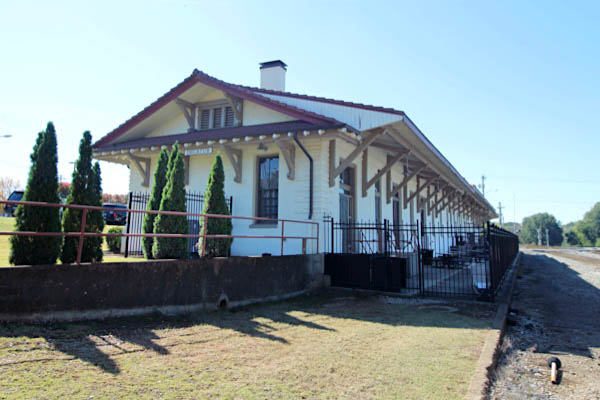
Decatur, Al / Oct 2022 / RWH
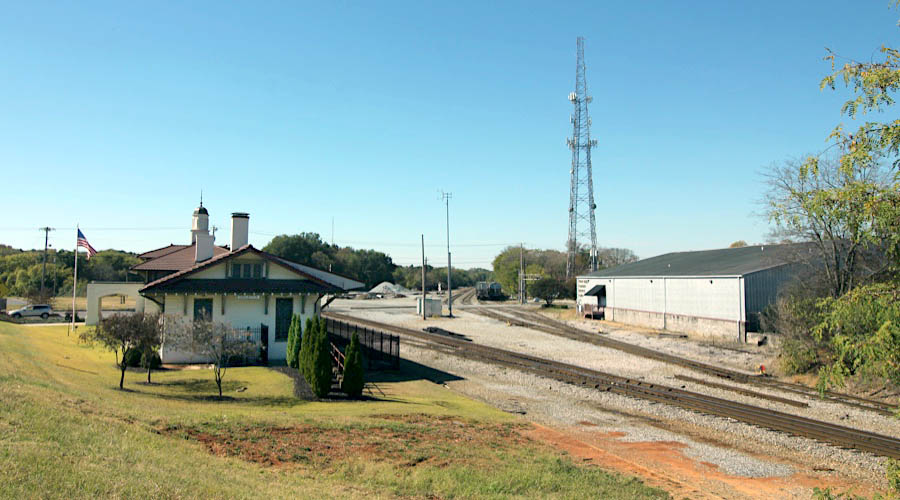
Decatur, Al / Oct 2022 / RWH
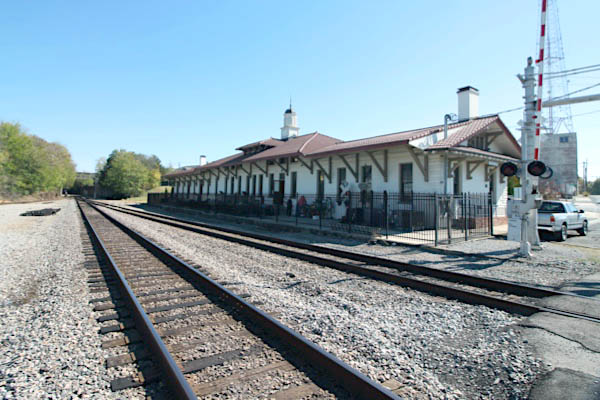
Decatur, Al / Oct 2022 / RWH
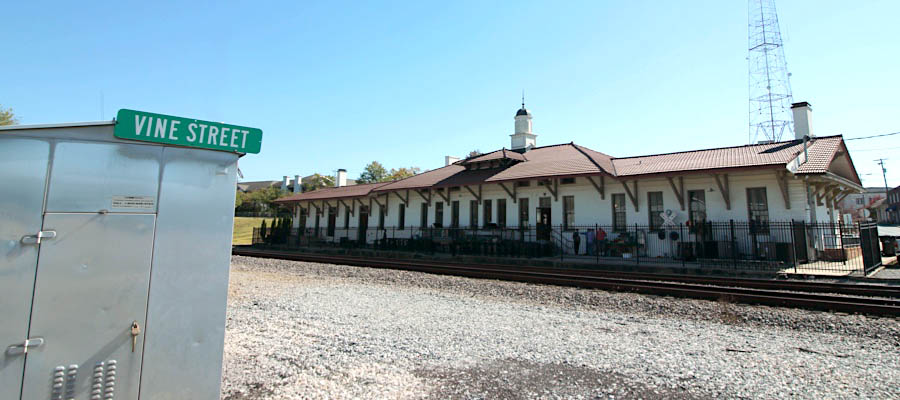
Decatur, Al / Oct 2022 / RWH

Decatur, Al / Oct 2022 / RWH
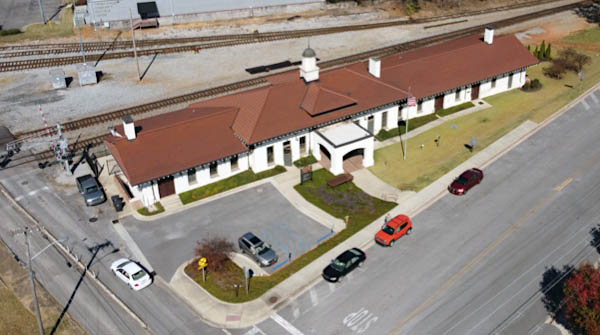
Decatur, Al / Oct 2022 / RWH
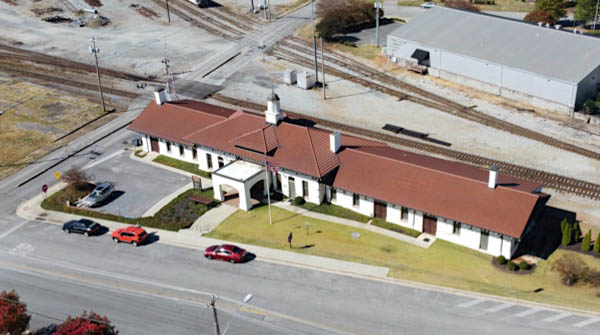
Decatur, Al / Oct 2022 / RWH
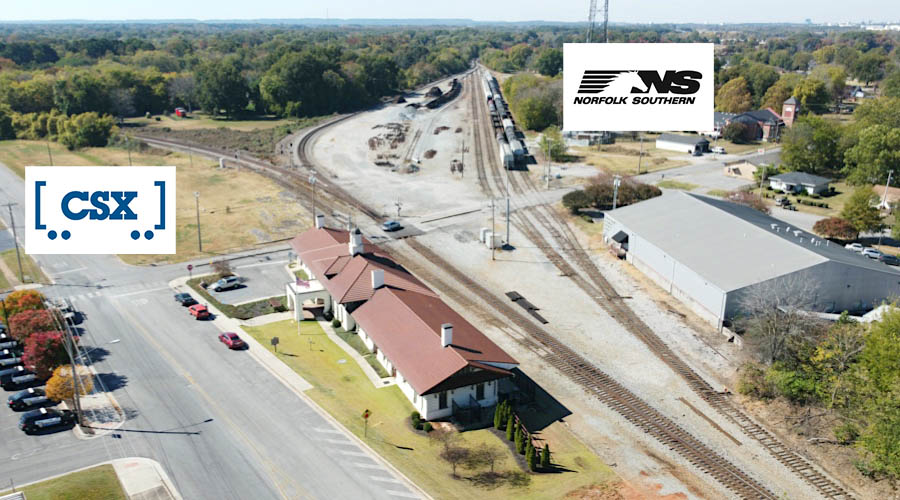
Decatur, Al / Oct 2022 / RWH
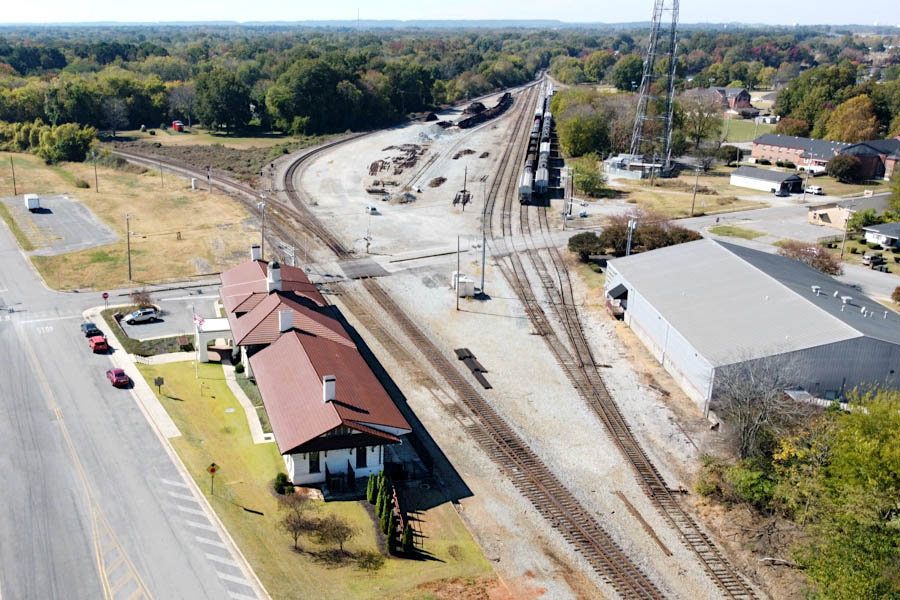
Decatur, Al / Oct 2022 / RWH
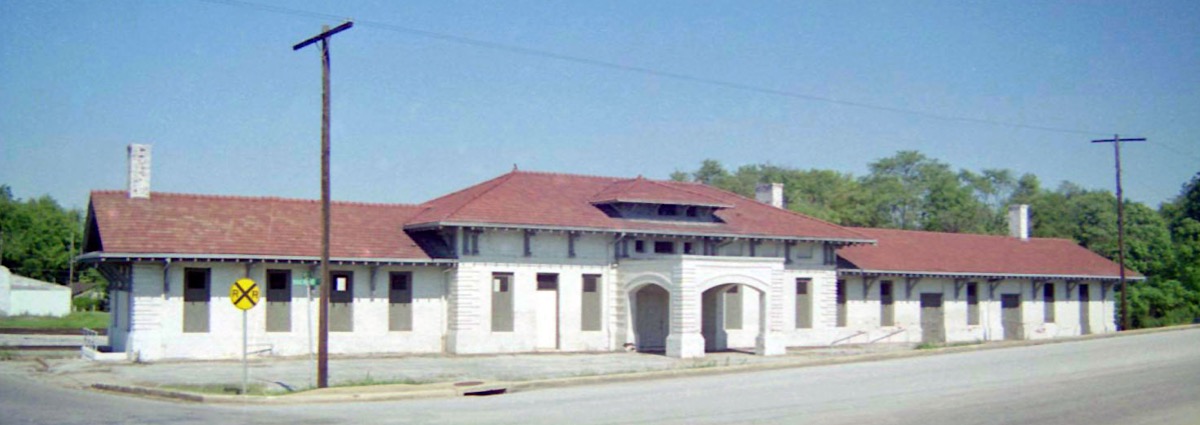
Decatur, Al / Jun 1996 / JCH

Decatur, Al / Jun 1996 / JCH
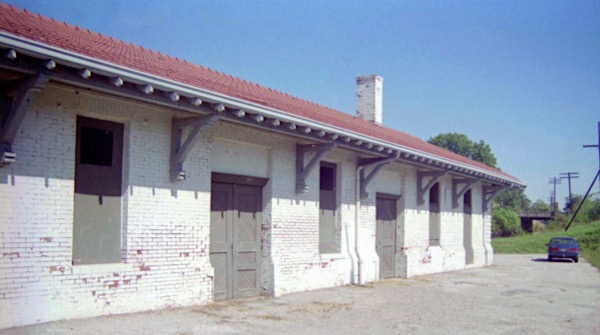
Decatur, Al / Jun 1996 / JCH
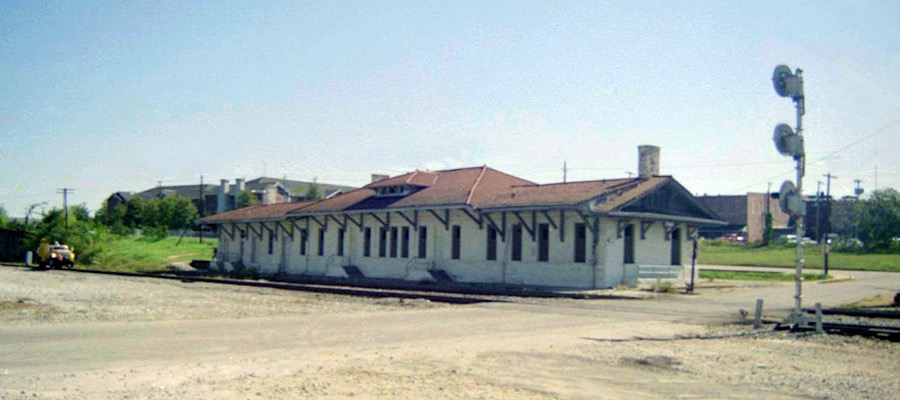
Decatur, Al / Jun 1996 / JCH

Decatur, Al / Jun 1996 / JCH
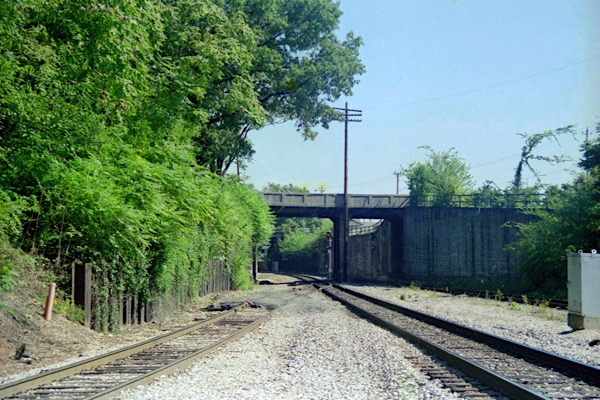
Decatur, Al / Jun 1996 / JCH
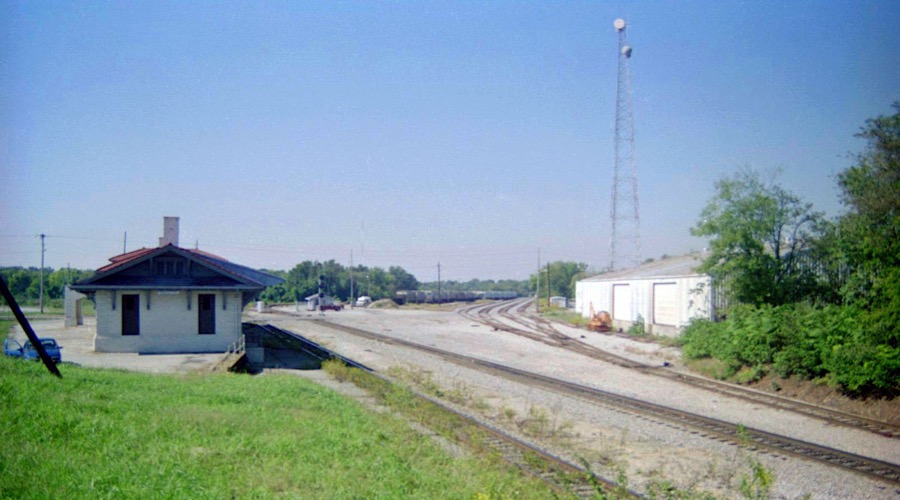
Decatur, Al / Jun 1996 / JCH

Decatur, Al / May 1999 / JCH
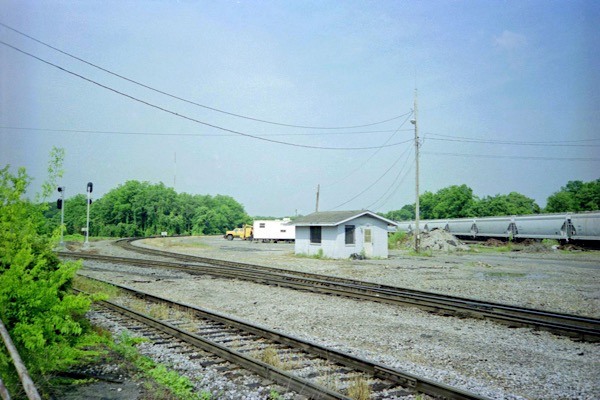
Decatur, Al / May 1999 / JCH

Decatur, Al / May 1999 / JCH
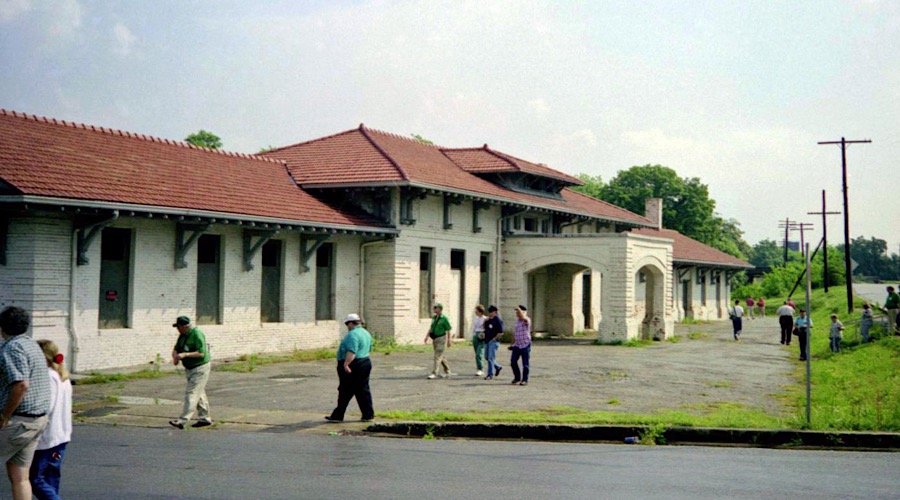
Decatur, Al / May 1999 / JCH
 Then and Now
Then and Now

Decatur, Al / May 1966 / JCH
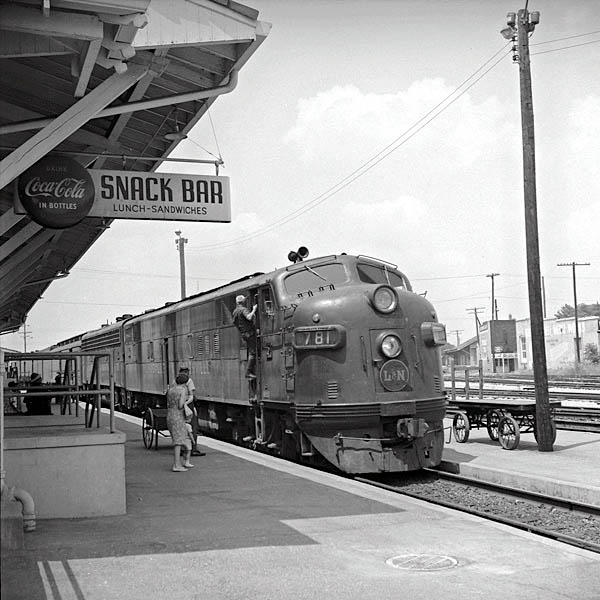
May 1966 / JCH
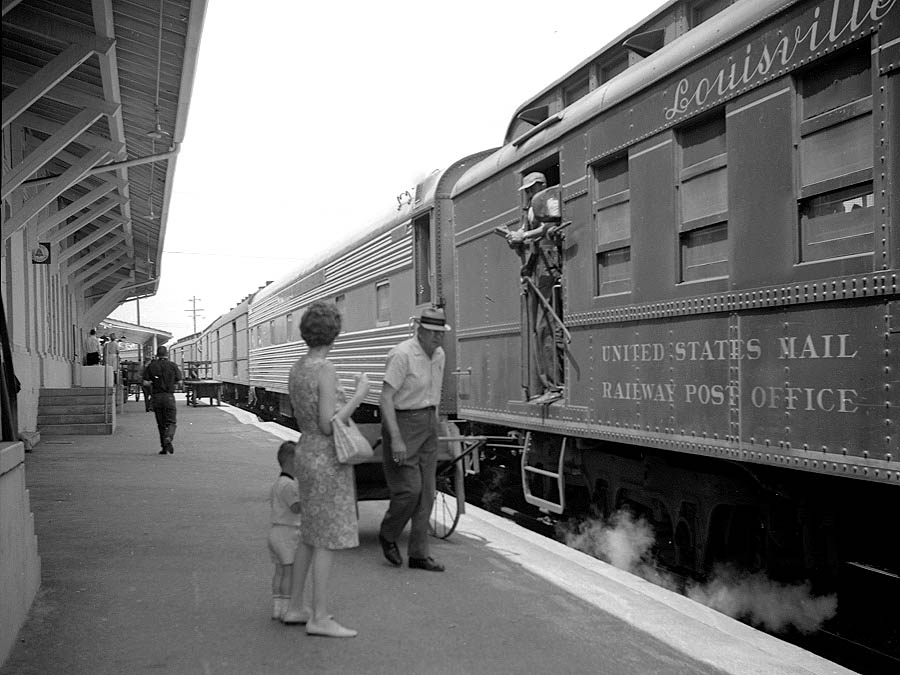
Decatur, Al / May 1966 / JCH

May 1966 / JCH

Decatur joint trackage notes / 1970 / JCH

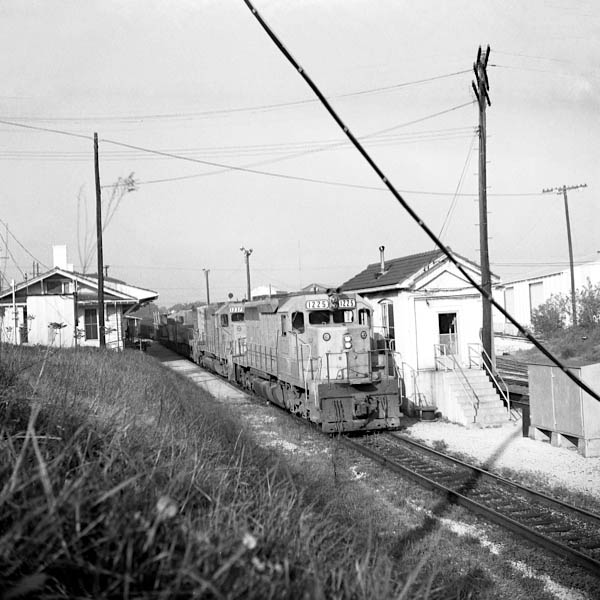
Decatur, Al / Apr 1971 / JCH

Decatur, Al / Apr 1971 / JCH
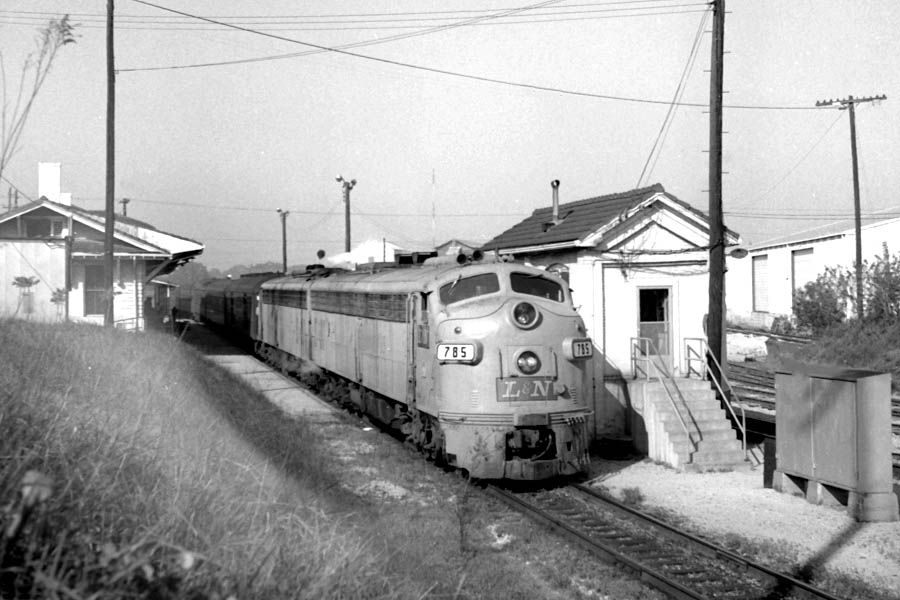
Decatur, Al / Apr 1971 / JCH
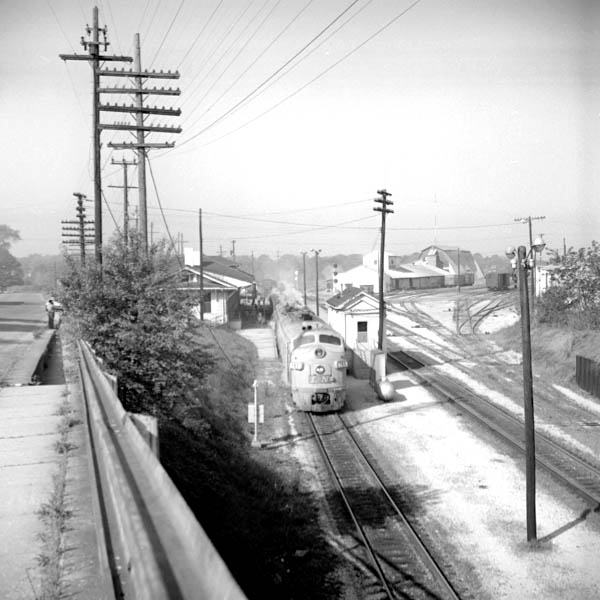
Decatur, Al / Apr 1971 / JCH
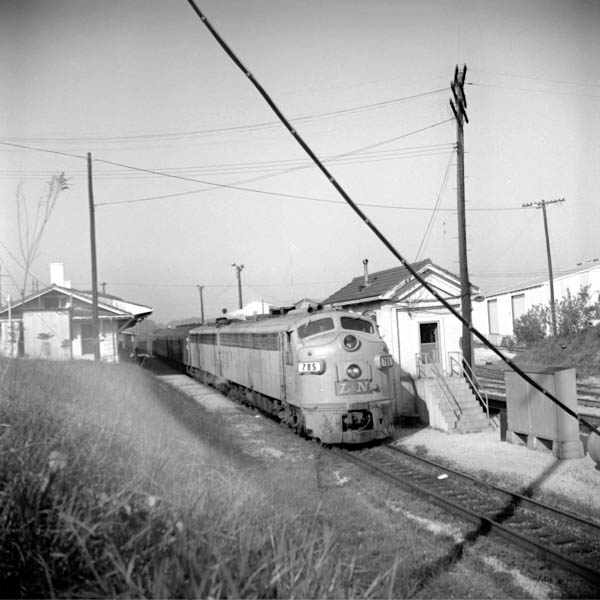
Decatur, Al / Apr 1971 / JCH

Decatur, Al / Oct 2022 / RWH
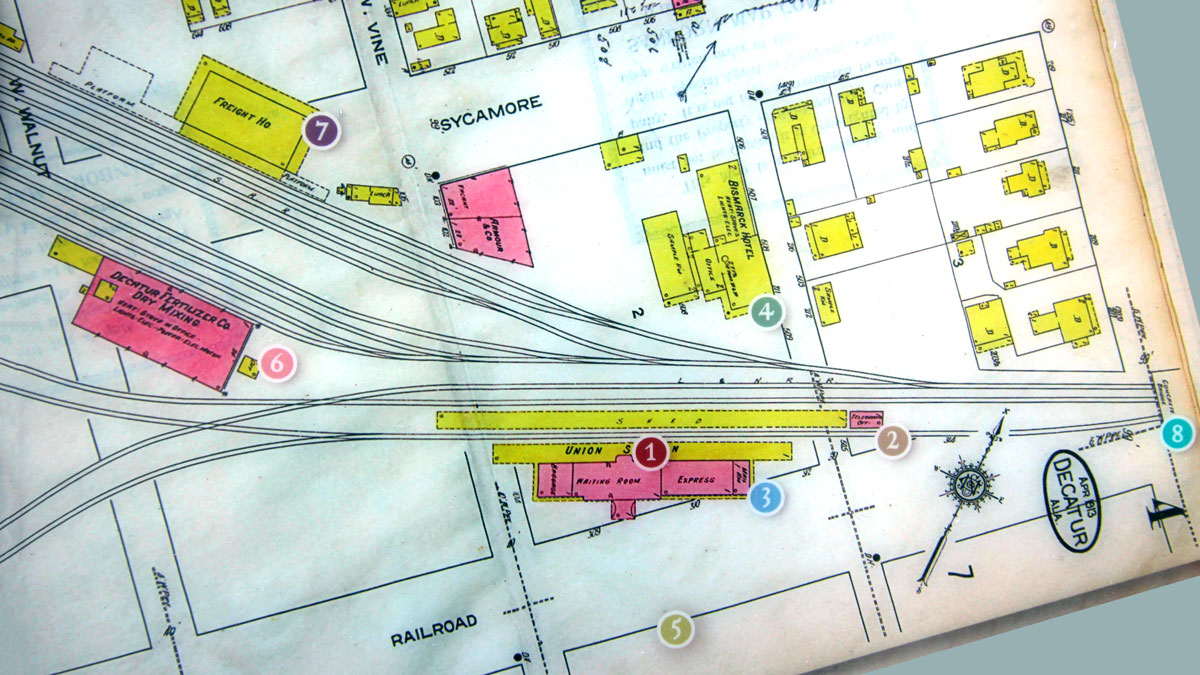
adapted from museum display / RWH

Oct 2022 / RWH
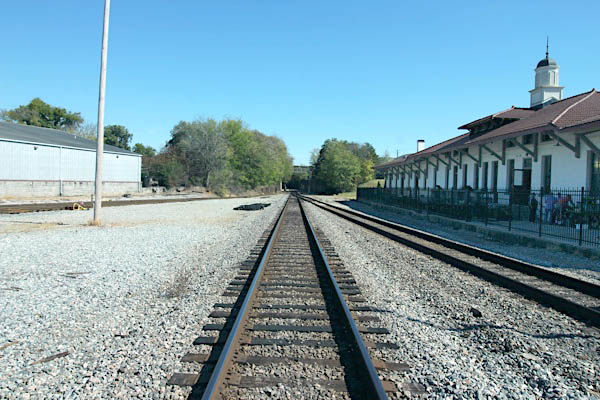
Decatur, Al / Oct 2022 / RWH
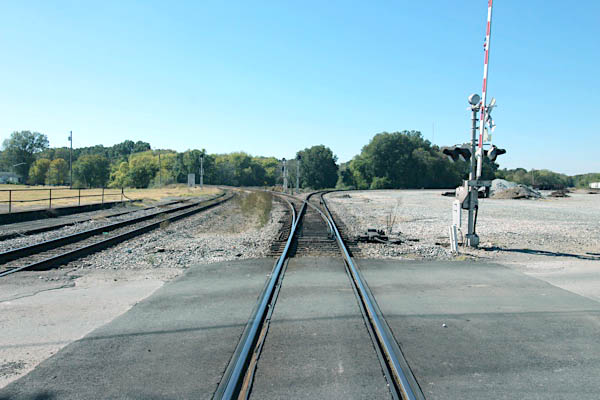
Decatur, Al / Oct 2022 / RWH
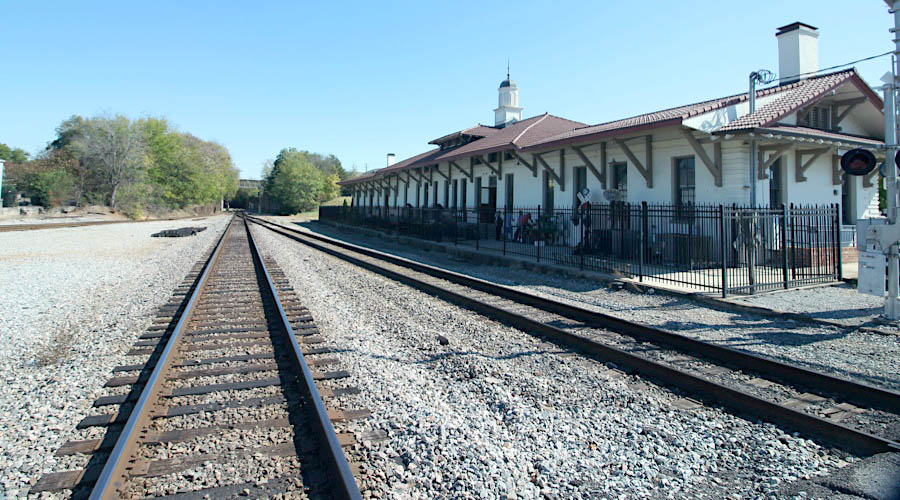
Decatur, Al / Oct 2022 / RWH
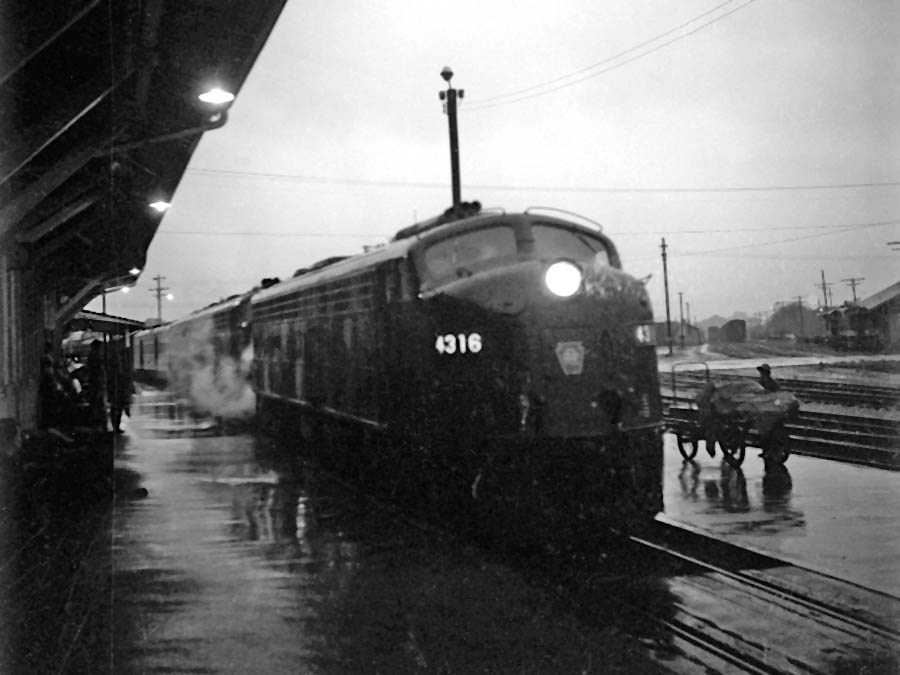
Decatur, Al / Jun 1968 / JCH
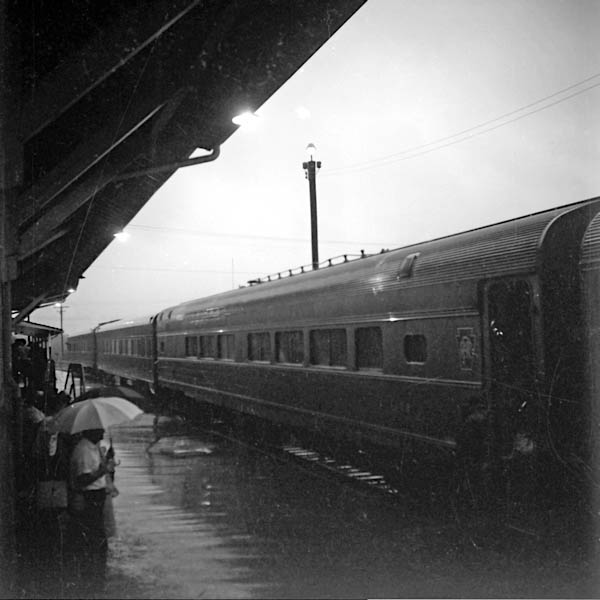
Decatur, Al / Jun 1968 / JCH
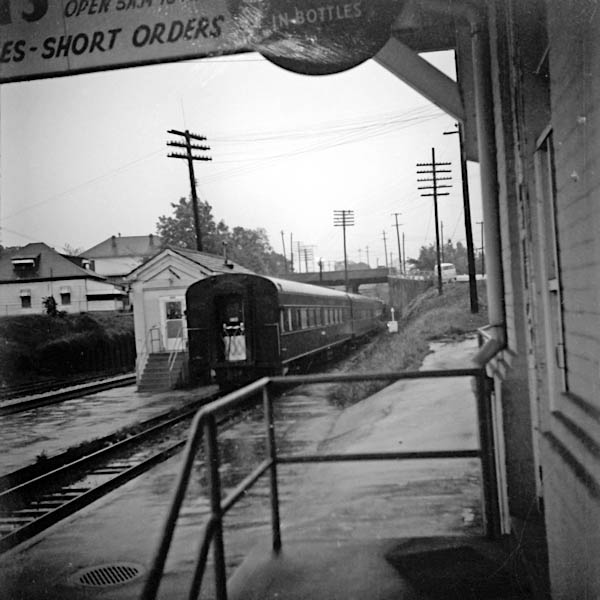
Decatur, Al / Jun 1968 / JCH



Decatur, Al / Oct 2022 / RWH
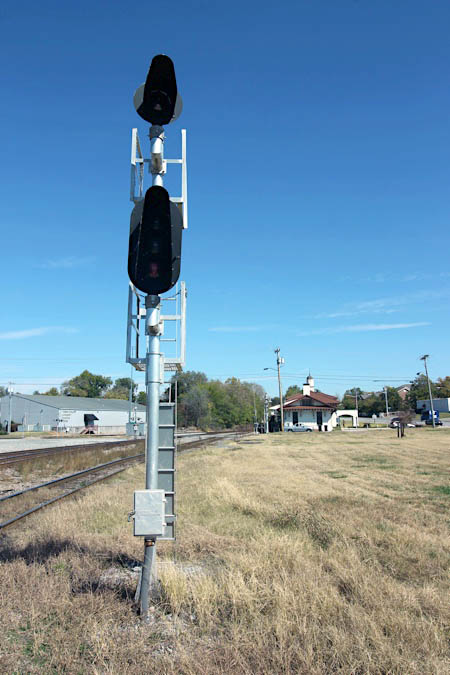
Oct 2022 / RWH
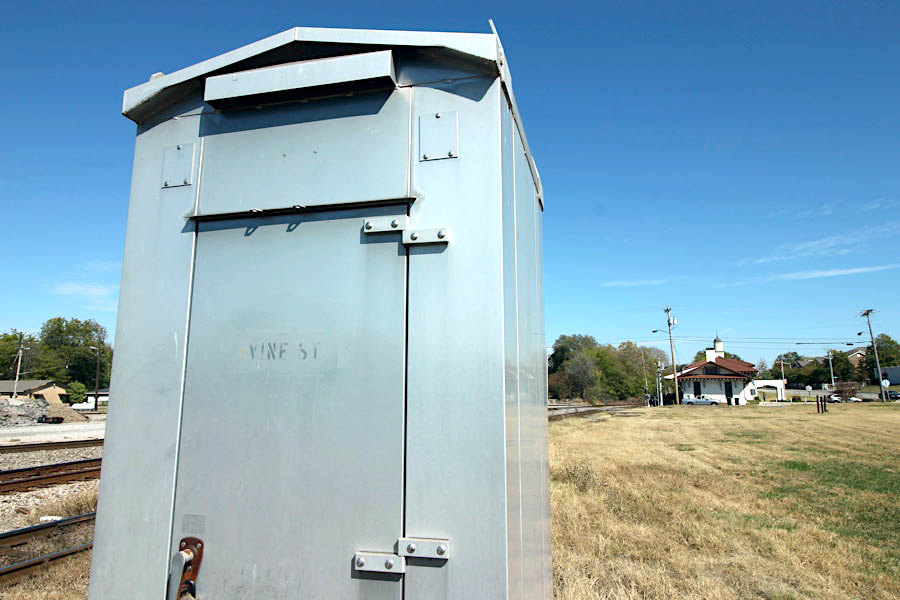
Oct 2022 / RWH
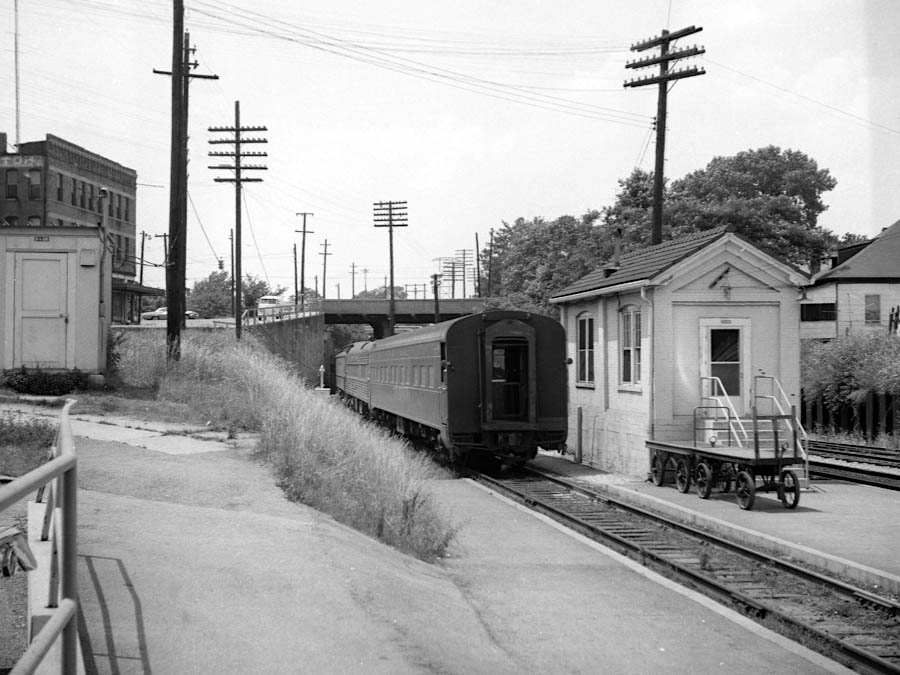
Decatur, Al / May 1966 / JCH
 The Humming Bird
The Humming Bird


collection
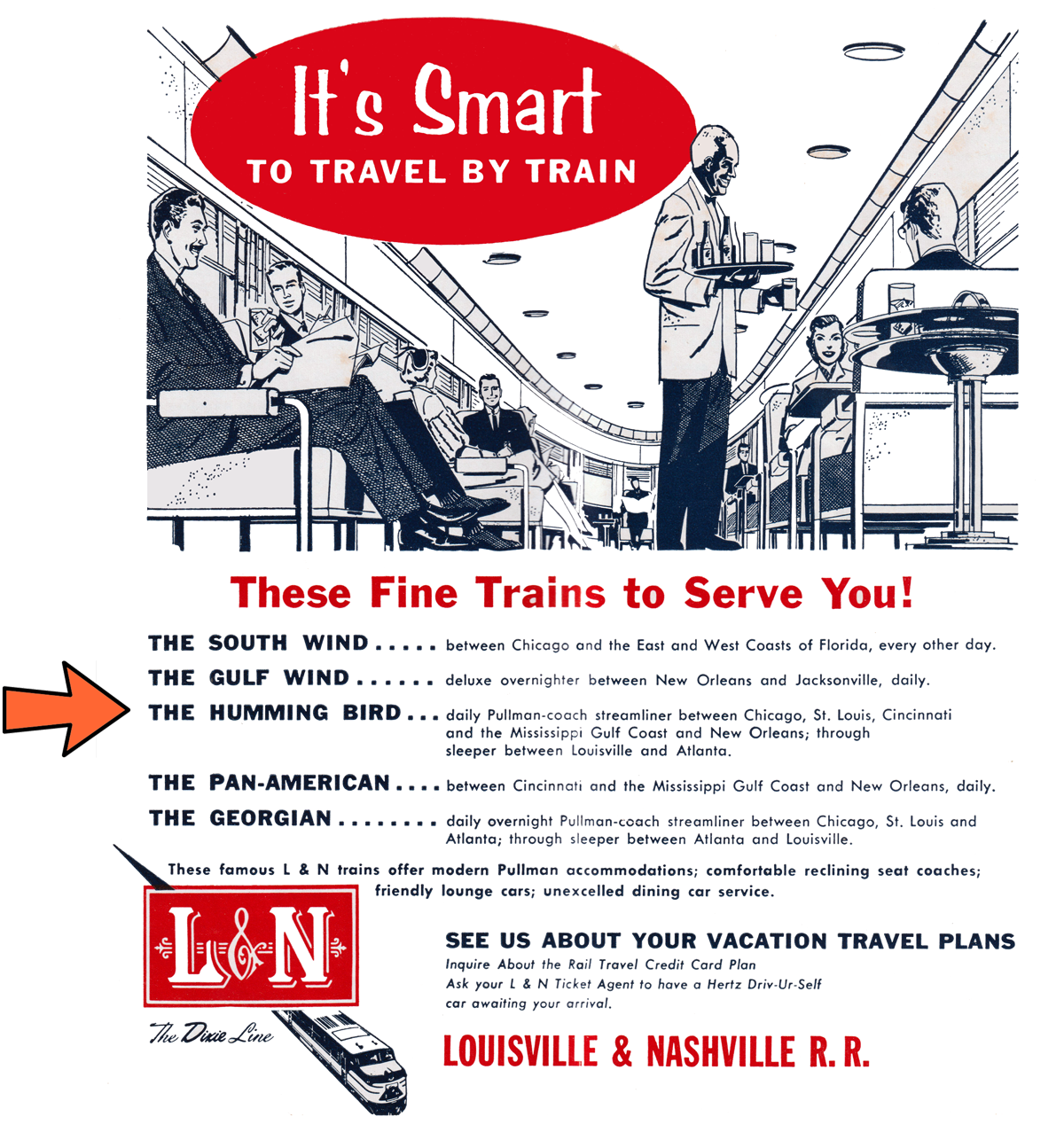
LN passenger ad / collection
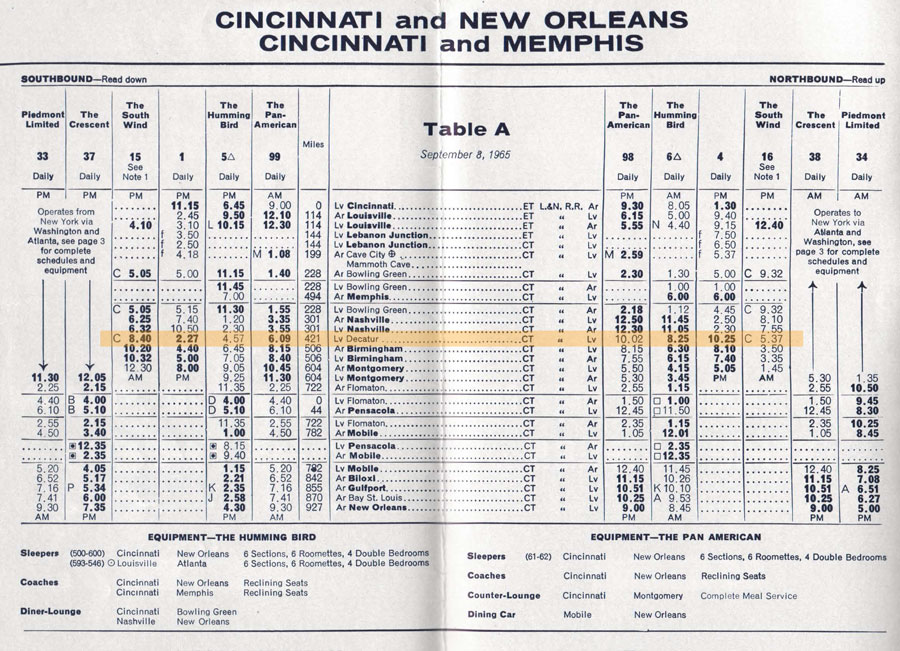
1965 L&N timetable / collection

Decatur, Al / Jun 1968 / JCH
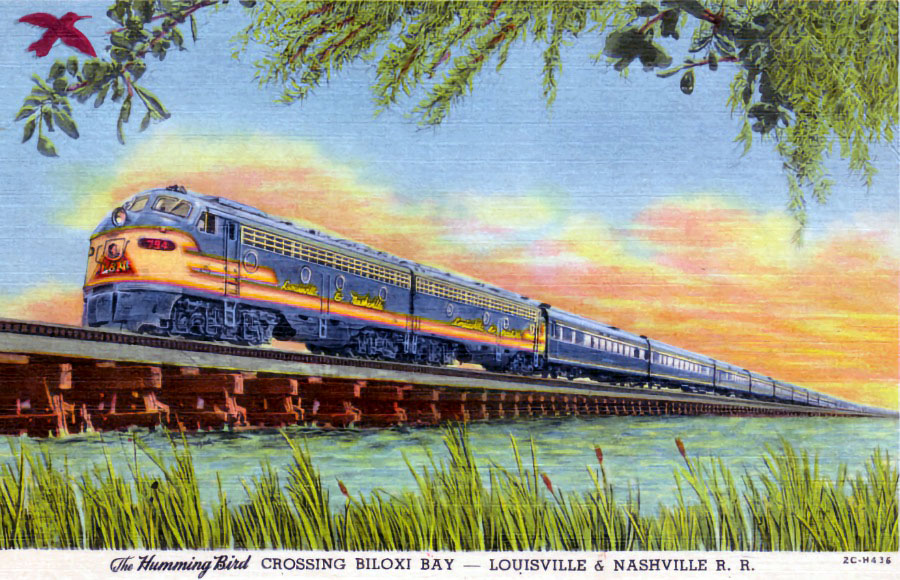 The Humming Bird was a named train of the Louisville & Nashville Railroad (L&N). The train, inaugurated in 1946, originally ran from Cincinnati, Ohio, to New Orleans, Louisiana, via Louisville, Nashville, Birmingham, Montgomery and Mobile and later via a connection at Bowling Green, Kentucky, to Memphis, Tennessee. A connection to Chicago was provided by the Chicago & Eastern Illinois Railroad.
The Humming Bird was a named train of the Louisville & Nashville Railroad (L&N). The train, inaugurated in 1946, originally ran from Cincinnati, Ohio, to New Orleans, Louisiana, via Louisville, Nashville, Birmingham, Montgomery and Mobile and later via a connection at Bowling Green, Kentucky, to Memphis, Tennessee. A connection to Chicago was provided by the Chicago & Eastern Illinois Railroad.
The Humming Bird had separate sections in the north and the south. The main northern part originated in Cincinnati; other sections (of the L&N's Georgian) originated in St. Louis and from Chicago. These sections linked with the main part of the train in Nashville. At Bowling Green, Kentucky, a southwest-bound section broke off, bound for Memphis; whereas the main southern route continued south to Nashville and New Orleans. Also, en route to New Orleans, a connecting bus option in Flomaton, Alabama assisted with travel to Pensacola, Florida, while trains were used for the northbound trip.
 The Humming Bird was canceled on January 9, 1969. At that time, the L&N Railroad earned some unwanted publicity when it terminated the final run of the train en route southbound at Birmingham when a federal judge lifted the order keeping the train running after the Interstate Commerce Commission approved its permanent discontinuance. The passengers were then bused to their destinations.
The Humming Bird was canceled on January 9, 1969. At that time, the L&N Railroad earned some unwanted publicity when it terminated the final run of the train en route southbound at Birmingham when a federal judge lifted the order keeping the train running after the Interstate Commerce Commission approved its permanent discontinuance. The passengers were then bused to their destinations.
Wikipedia / images RWH collection
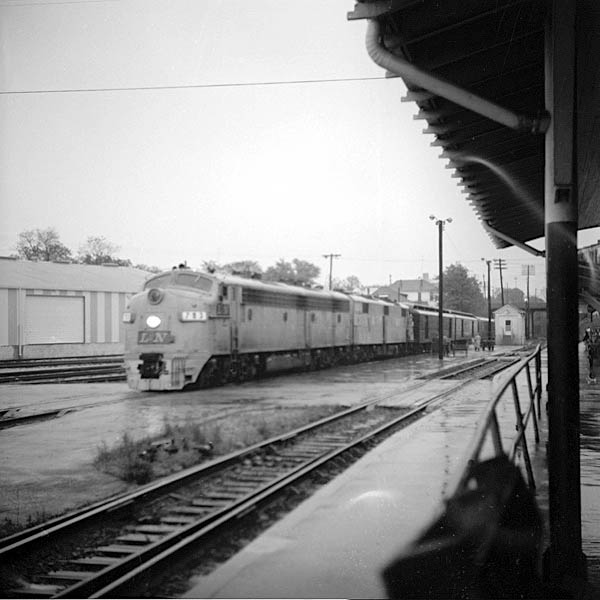
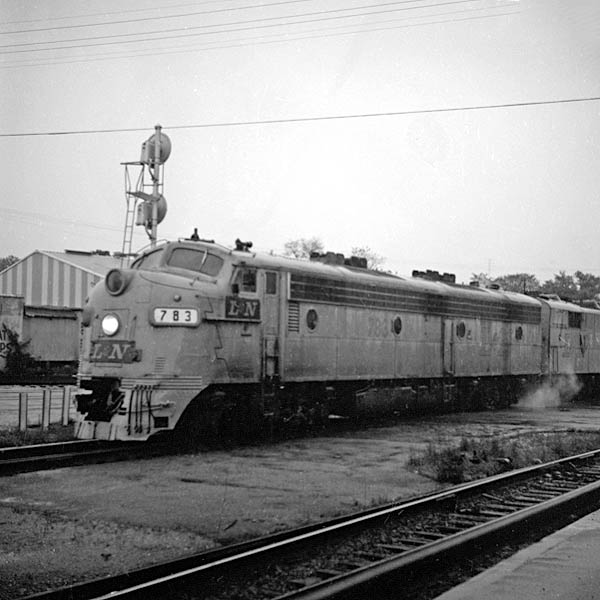
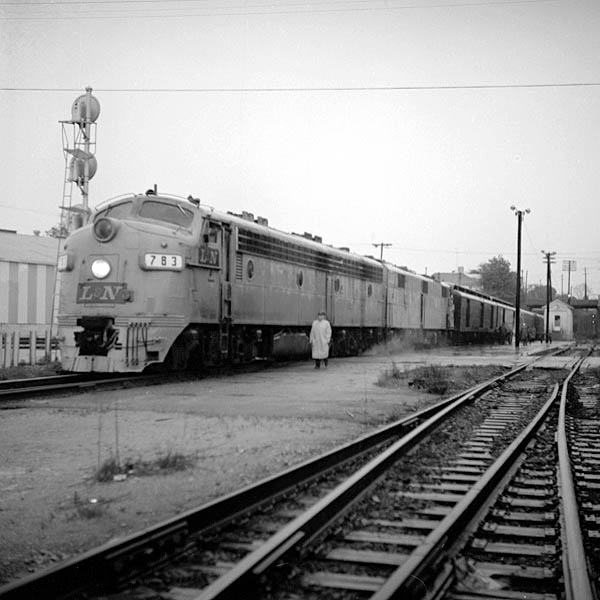
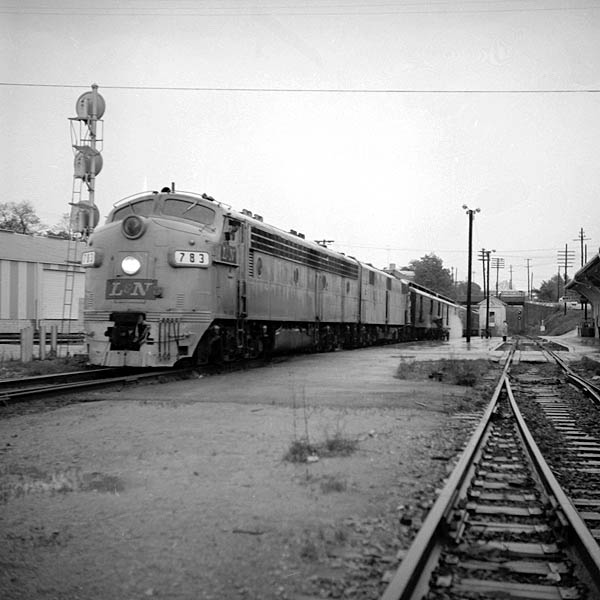
Decatur, Al / Jun 1968 / JCH

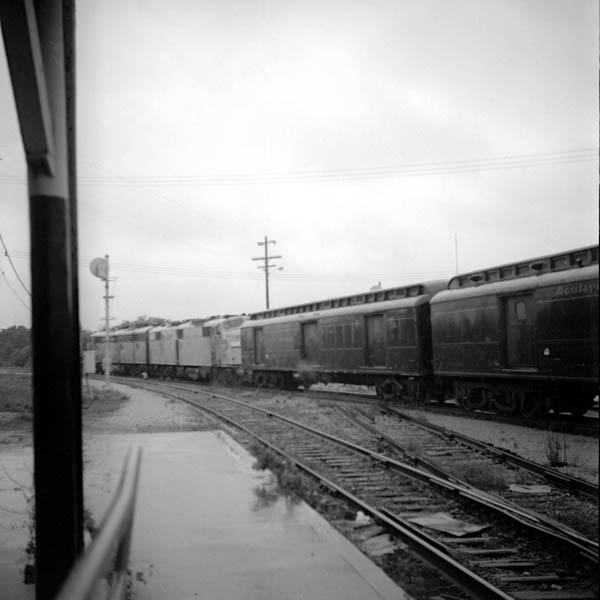


Decatur, Al / Jun 1968 / JCH
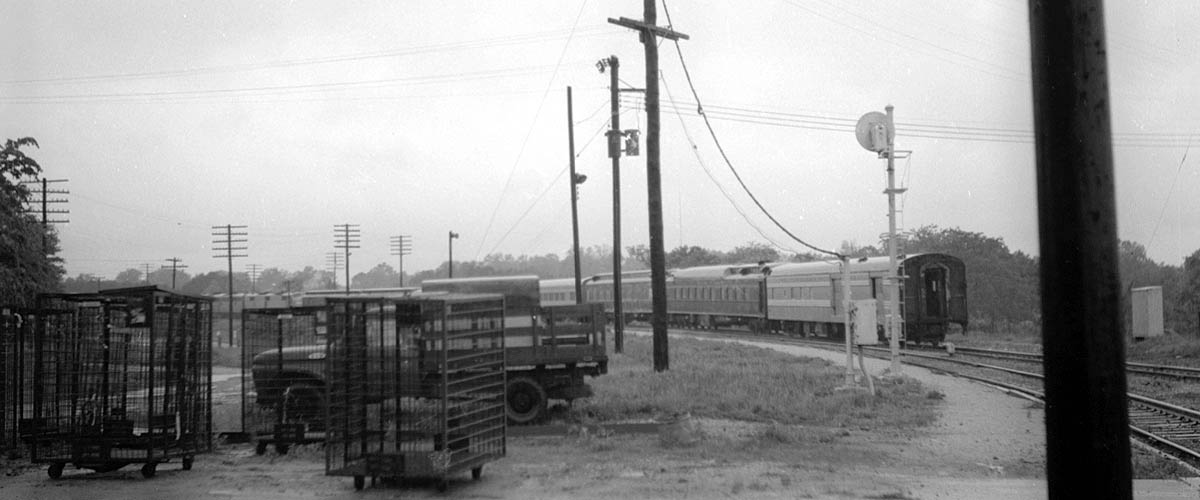
Decatur, Al / Jun 1968 / JCH
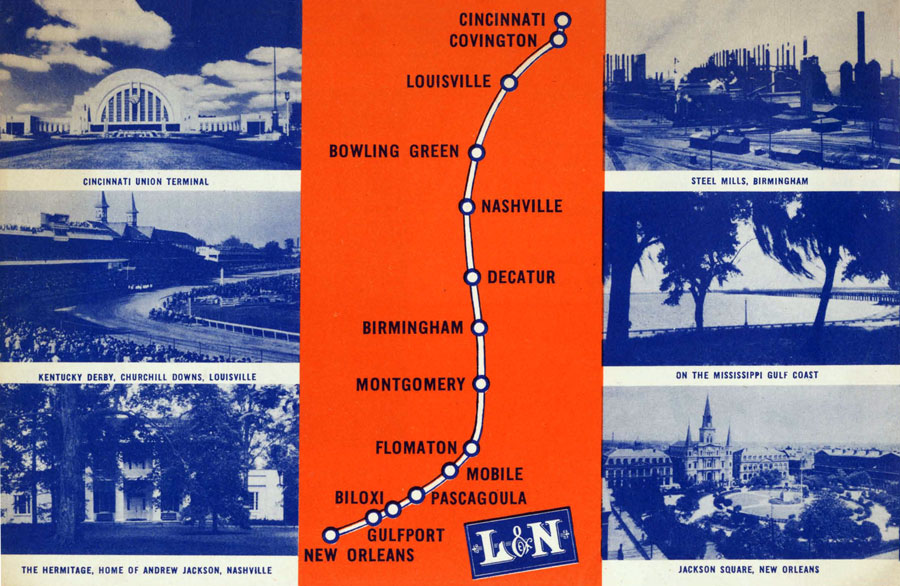
LN passenger ad / collection
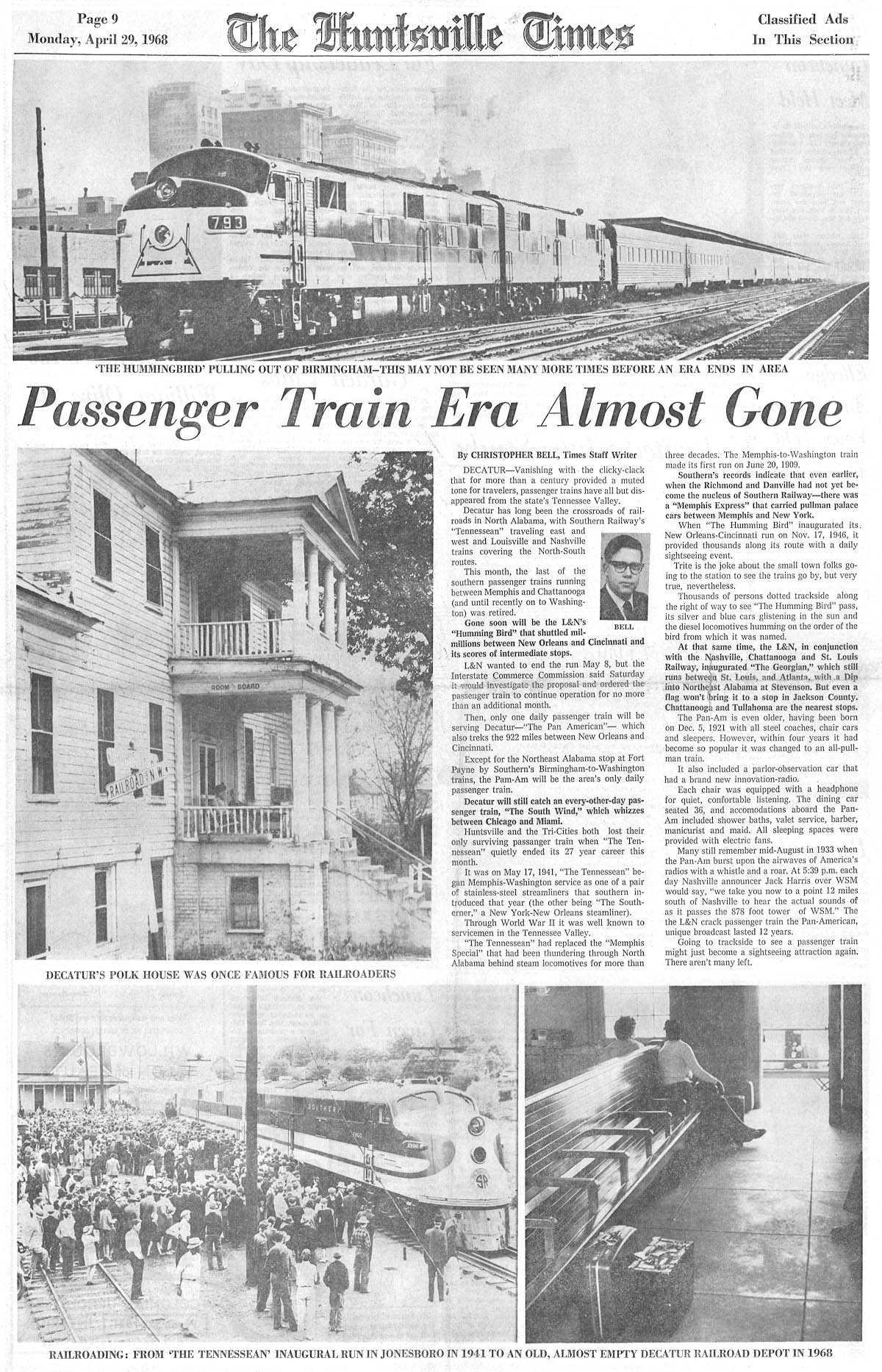
from Huntsville Times newspaper - Apr 1968 / collection
Museum Displays

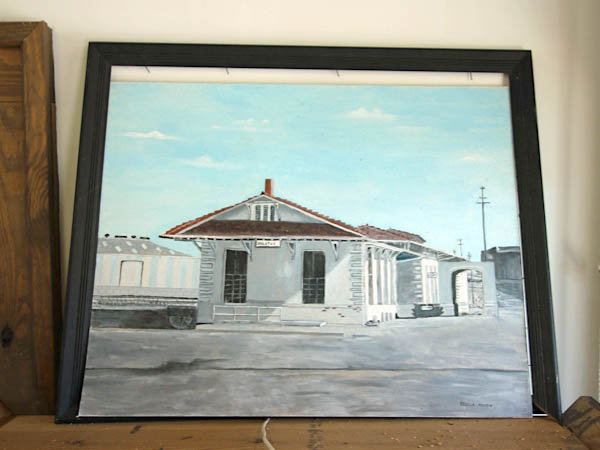
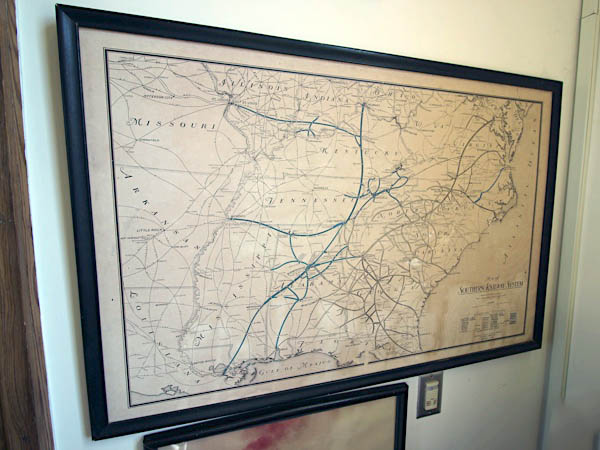
Oct 2022 / RWH
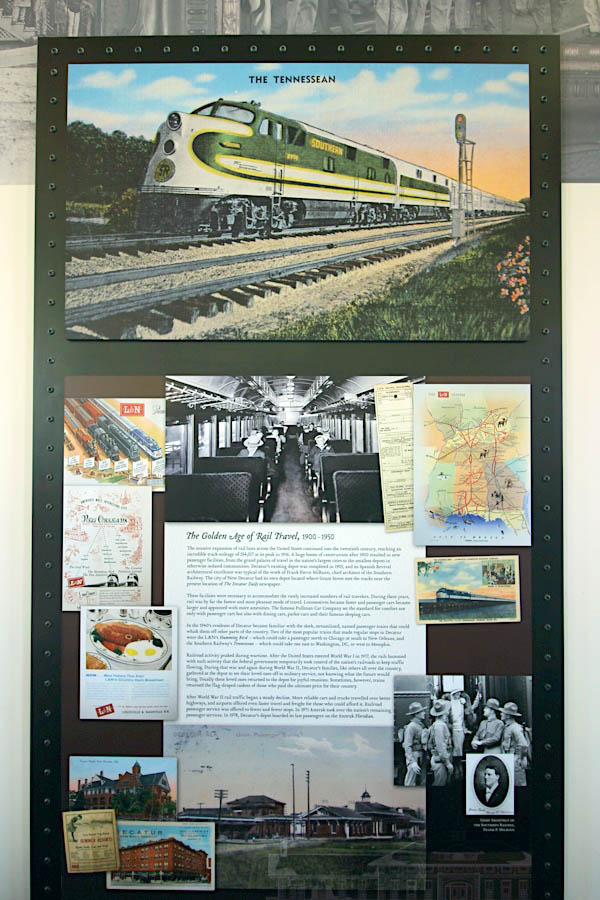
Oct 2022 / RWH

The new Decatur Union Depot Museum was developed under the guidance of city historian David Breland and focuses mainly on the area's railway heritage. Exhibits include model trains and train sets, railroad-related artifacts, and graphic panels that tell the history of rail service in the area dating back to the 1830s. The lobby of the museum includes a number of scenes and artifacts from Decatur businesses of the early 1900s that surrounded the depot. The main museum artifact room includes the original ticket office and a model train layout depicting Decatur along with artifacts and railroad signage. It also contains benches and the superintendent's desk from the original Union Depot and a depot desk from the Tuscumbia, Colbert County, depot from the 1920s. The museum also includes a theater that contains artifacts such as antique toy trains and railroad tools as well as audio/video presentations on Decatur's railroads. Behind the depot is the original, though renovated, loading dock that includes an original 1905 baggage cart and a number of artifacts.
Encyclopedia of Alabama / image RWH
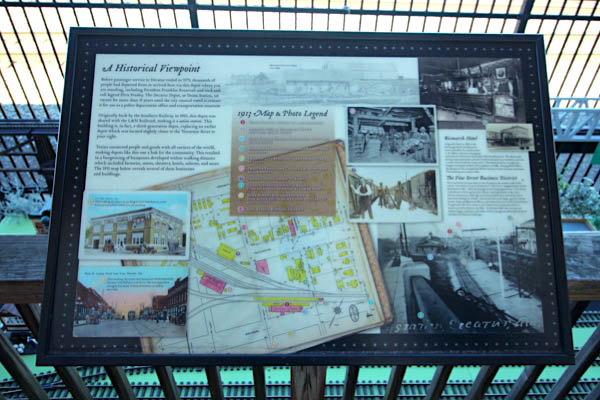
Oct 2022 / RWH
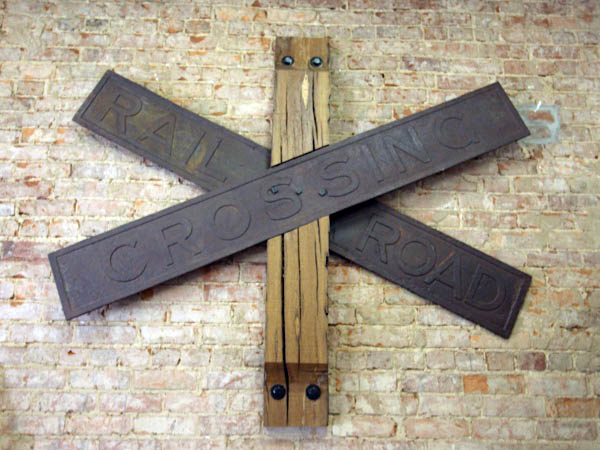
Oct 2022 / RWH

Oct 2022 / RWH
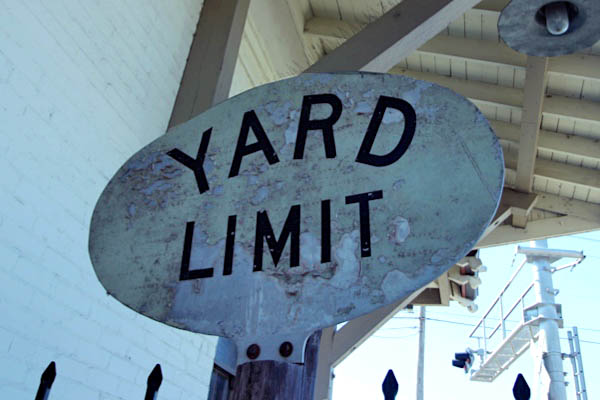
Oct 2022 / RWH
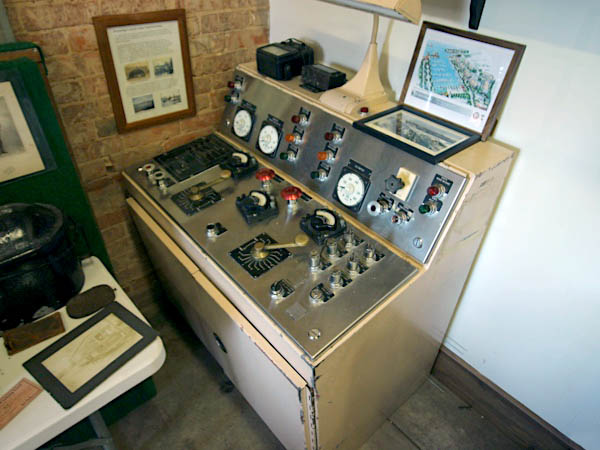
Oct 2022 / RWH
 The Trench
The Trench
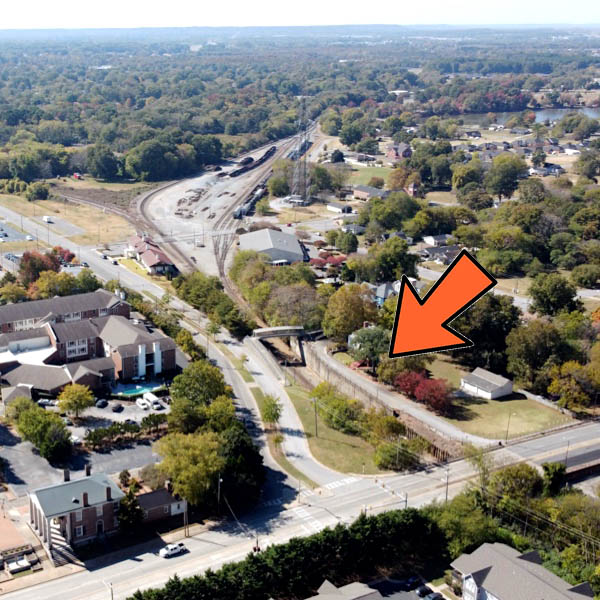
Decatur, Al / Oct 2022 / RWH
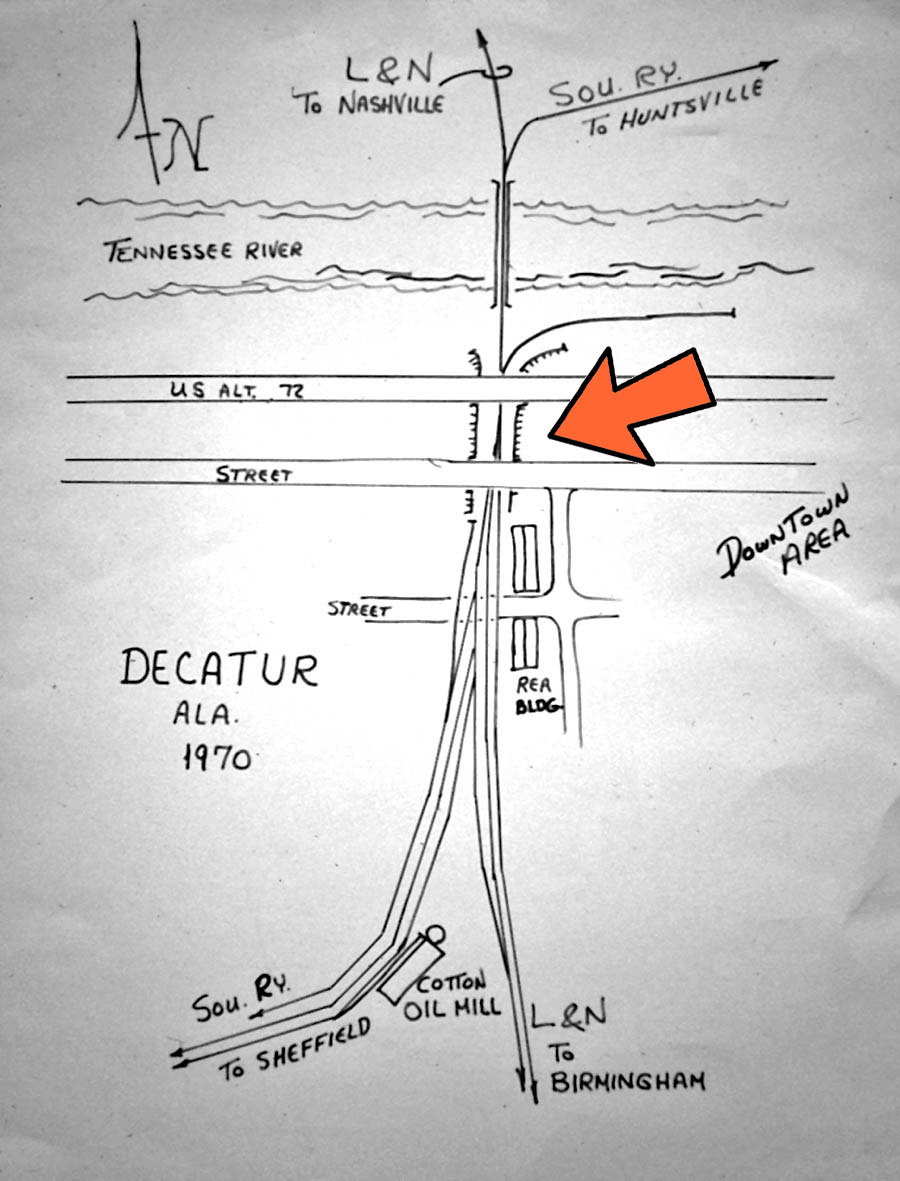
track notes / JCH
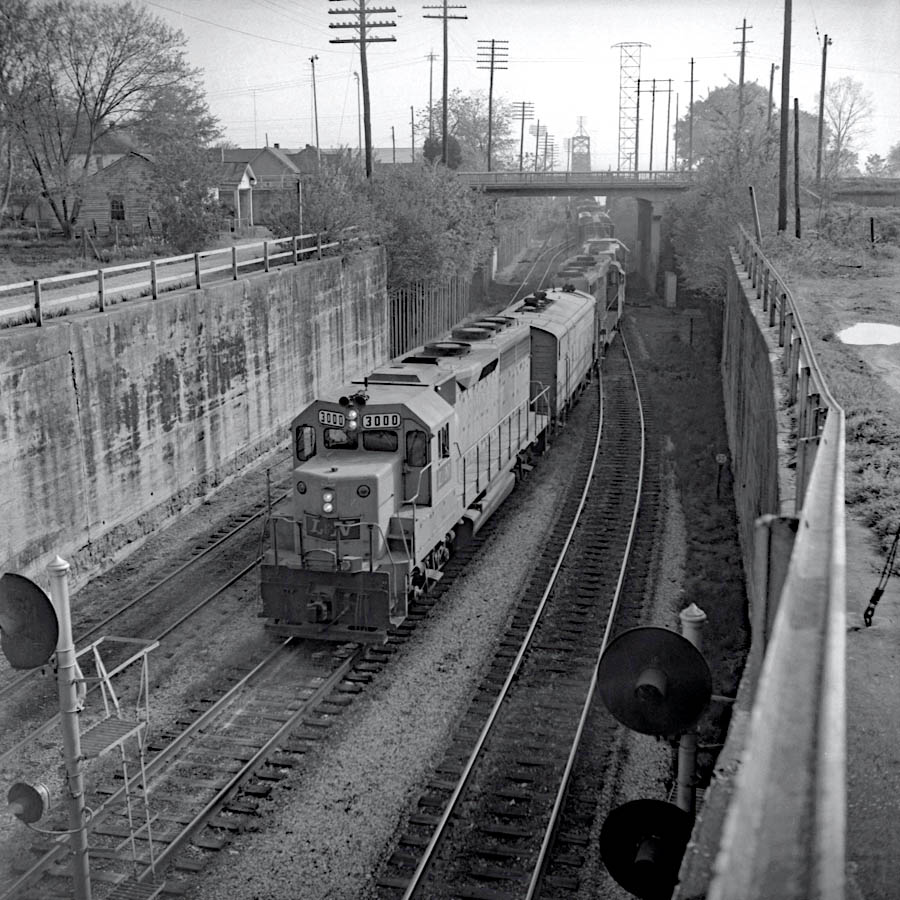
Decatur, Al / Apr 1971 / JCH

Decatur, Al / Apr 1971 / JCH
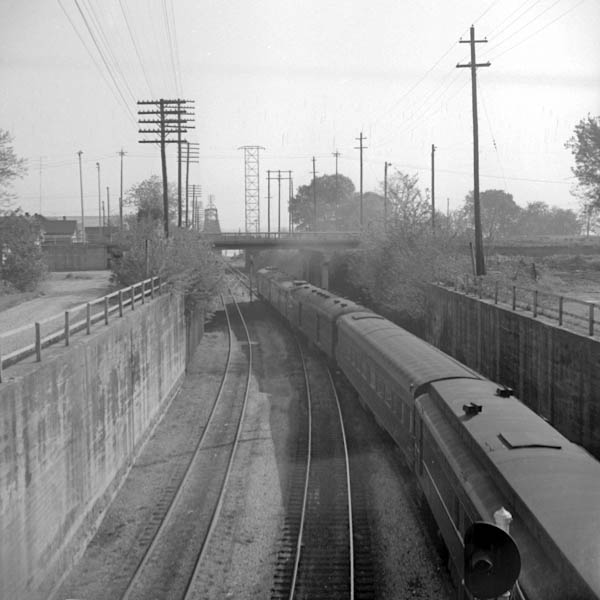
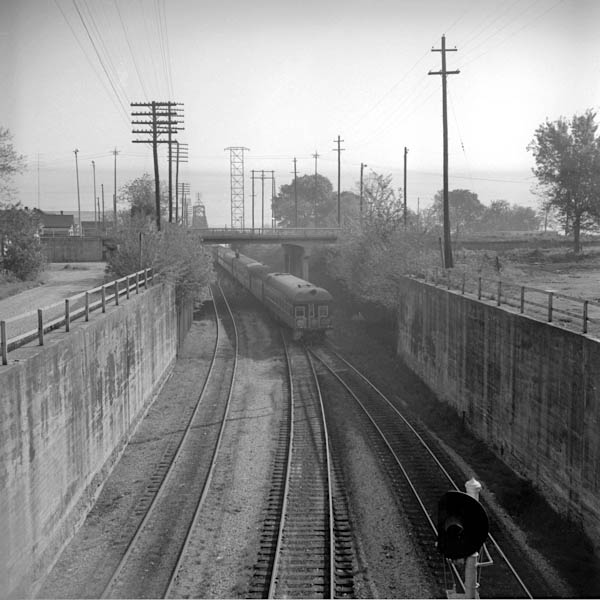
Decatur, Al / Apr 1971 / JCH


Decatur, Al / Apr 1971 / JCH

Click to see this location along Railroad Street NW plotted on a Google Maps page
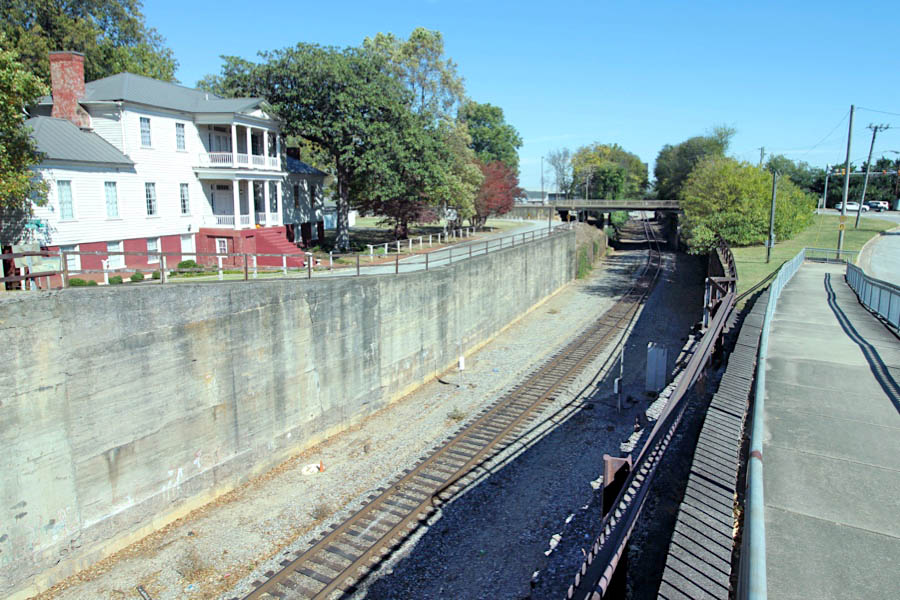
Decatur, Al / Oct 2022 / RWH

Decatur, Al / Oct 2022 / RWH
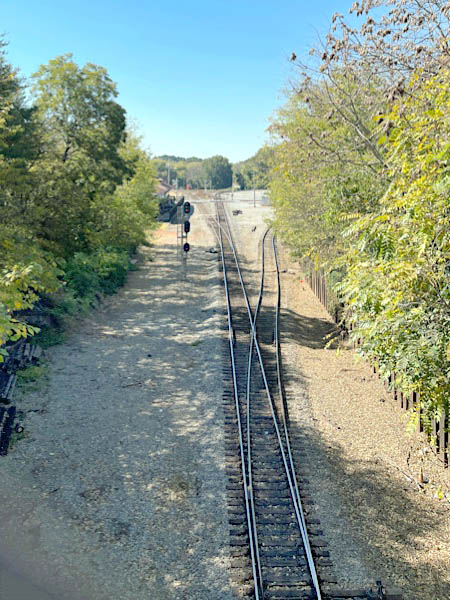
Oct 2022 / RWH

Oct 2022 / RWH

Decatur, Al / Jun 1996 / JCH
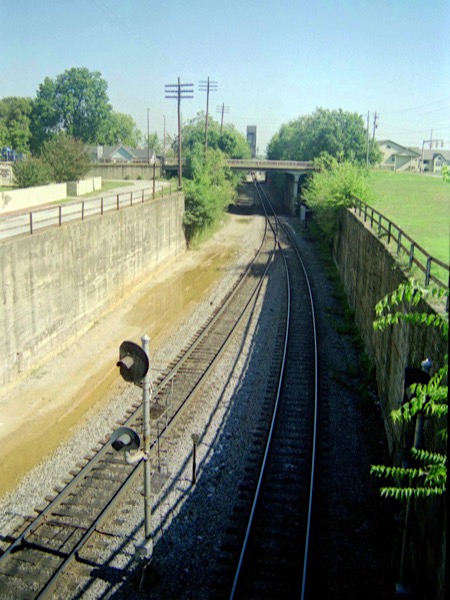
Jun 1996 / JCH
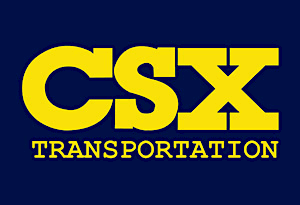 CSX Mainline Action
CSX Mainline Action
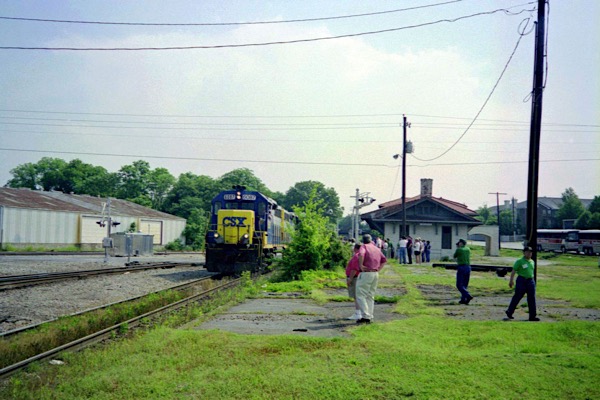
Decatur, Al / May 1999 / JCH

Decatur, Al / May 1999 / JCH

Decatur, Al / May 1999 / JCH

Decatur, Al / May 1999 / JCH


Decatur, Al / May 1999 / JCH

Decatur, Al / May 1999 / JCH

Decatur, Al / May 1999 / JCH
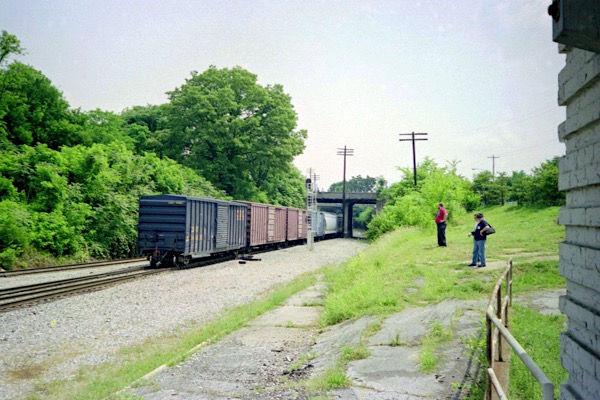
Decatur, Al / May 1999 / JCH
 NS Mainline Action
NS Mainline Action
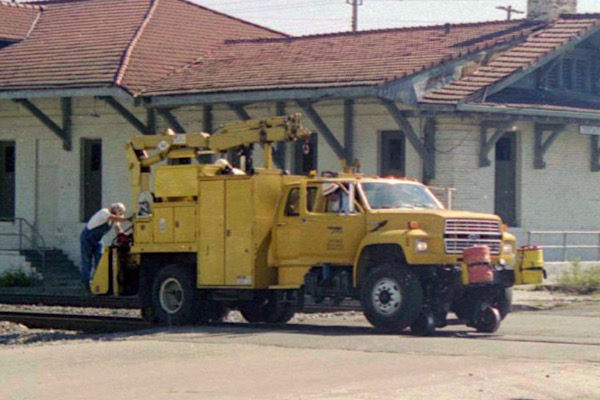
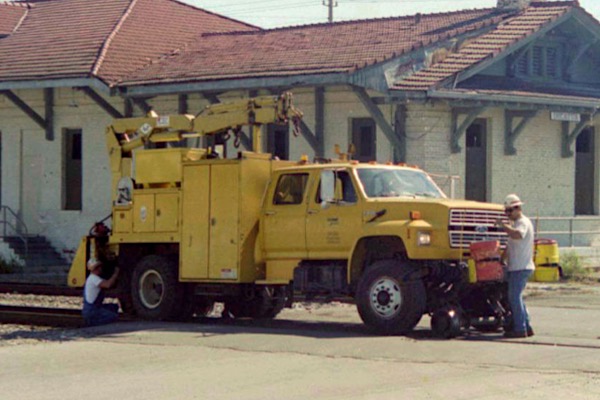
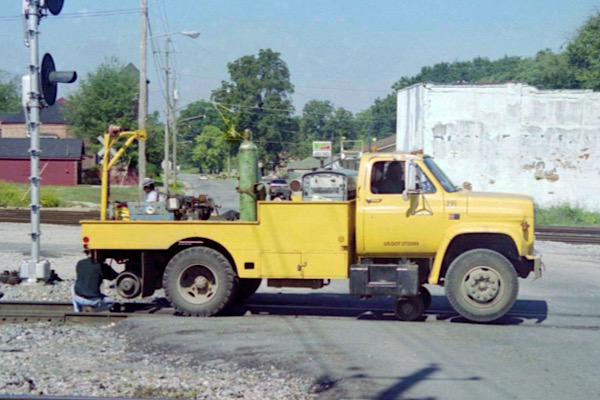
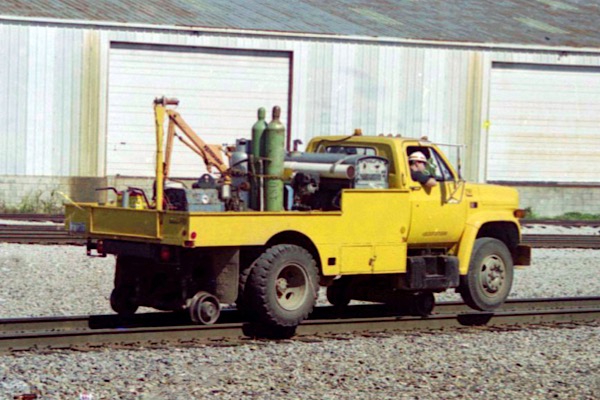


Decatur, Al / Jun 1996 / JCH

Decatur, Al / May 1999 / JCH

Decatur, Al / May 1999 / JCH

Decatur, Al / May 1999 / JCH
 UP Mainline Action
UP Mainline Action

Decatur, Al / May 1999 / JCH

Decatur, Al / May 1999 / JCH

Decatur, Al / May 1999 / JCH

Decatur, Al / May 1999 / JCH
 Tennessee River Bridge
Tennessee River Bridge

Decatur, Al / Oct 2022 / RWH

Decatur, Al / Oct 2022 / RWH

Decatur, Al / Oct 2022 / RWH

Click to see the Tennessee River Bridge landing plotted on a Google Maps page

Decatur, Al / Oct 2022 / RWH

Decatur, Al / Oct 2022 / RWH
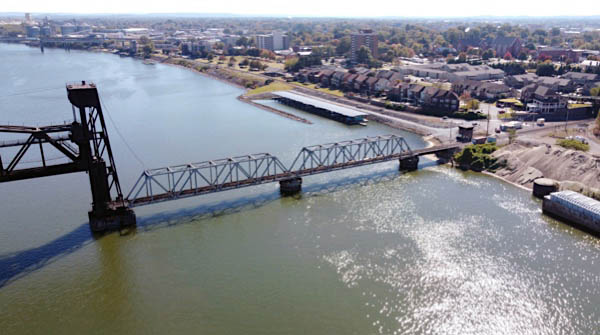
Decatur, Al / Oct 2022 / RWH

Decatur, Al / Oct 2022 / RWH
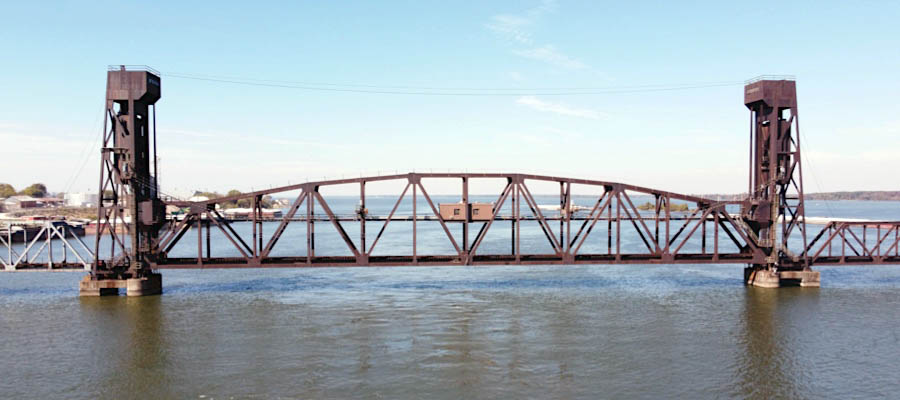
Decatur, Al / Oct 2022 / RWH
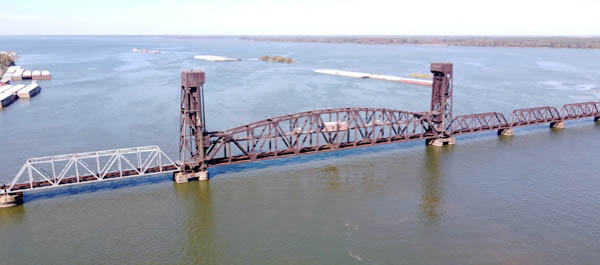
Decatur, Al / Oct 2022 / RWH

Decatur, Al / Oct 2022 / RWH

Decatur, Al / Oct 2022 / RWH
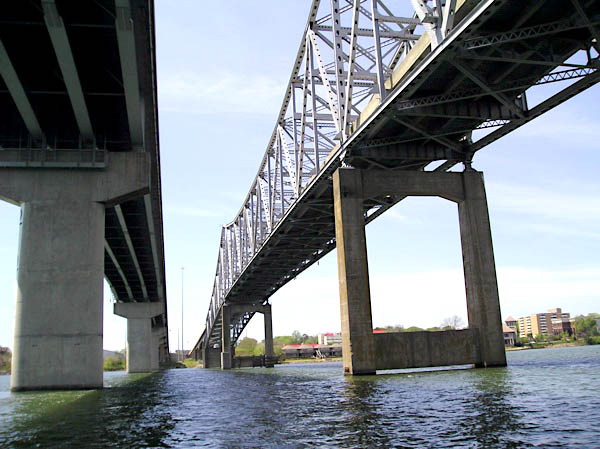 The Tennessee River is the largest tributary of the Ohio River. It is approximately 652 miles long and is located in the southeastern United States in the Tennessee Valley. The river was once popularly known as the Cherokee River, among other names, as the Cherokee people had their homelands along its banks, especially in what are now East Tennessee and northern Alabama.
The Tennessee River is the largest tributary of the Ohio River. It is approximately 652 miles long and is located in the southeastern United States in the Tennessee Valley. The river was once popularly known as the Cherokee River, among other names, as the Cherokee people had their homelands along its banks, especially in what are now East Tennessee and northern Alabama.
The Tennessee River is formed at the confluence of the Holston and French Broad rivers in present-day Knoxville, Tennessee. From Knoxville, it flows southwest through East Tennessee into Chattanooga before crossing into Alabama. It travels through the Huntsville and Decatur area before reaching the Muscle Shoals area, and eventually forms a small part of the state's border with Mississippi, before returning to Tennessee. The river misses Georgia by about 250 feet. The Tennessee river’s route northerly through Tennessee defines the boundary between two of Tennessee's Grand Divisions: Middle and West Tennessee. It flows into the Ohio River at Paducah, Kentucky.
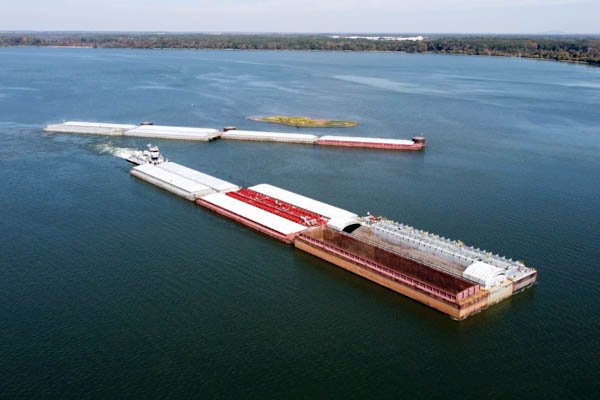
Decatur, Al / Oct 2022 / RWH
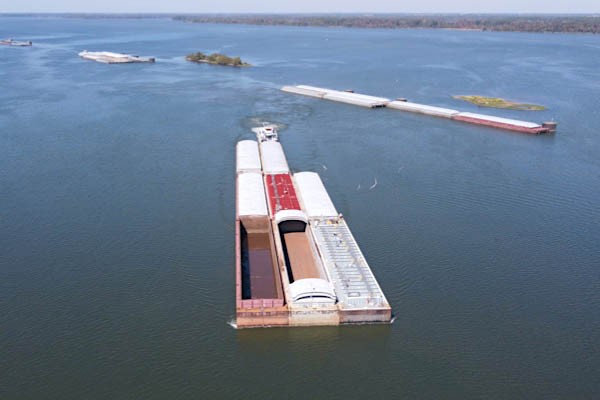
Decatur, Al / Oct 2022 / RWH
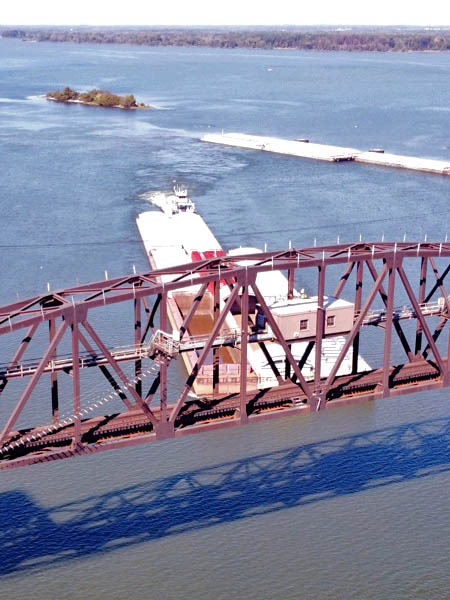
Oct 2022 / RWH
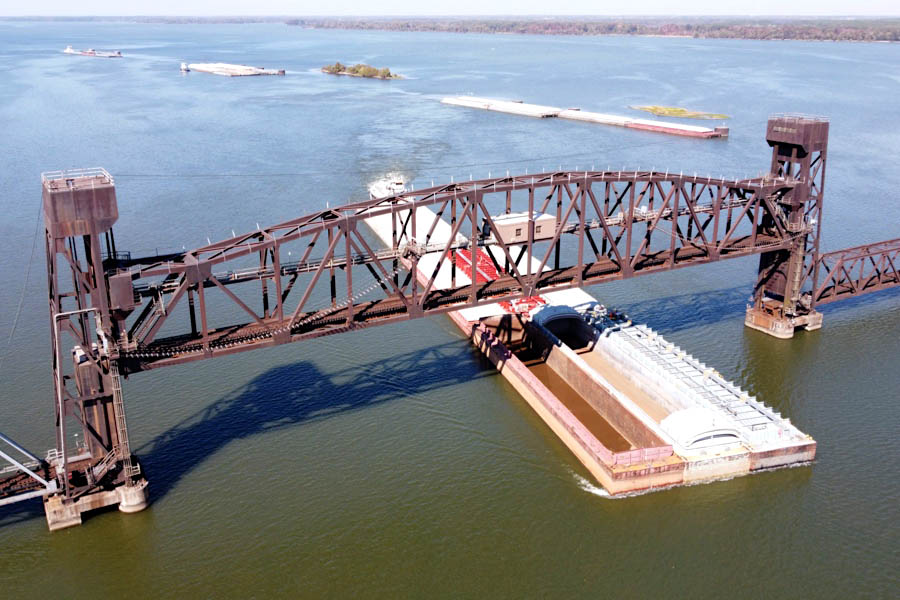
Decatur, Al / Oct 2022 / RWH
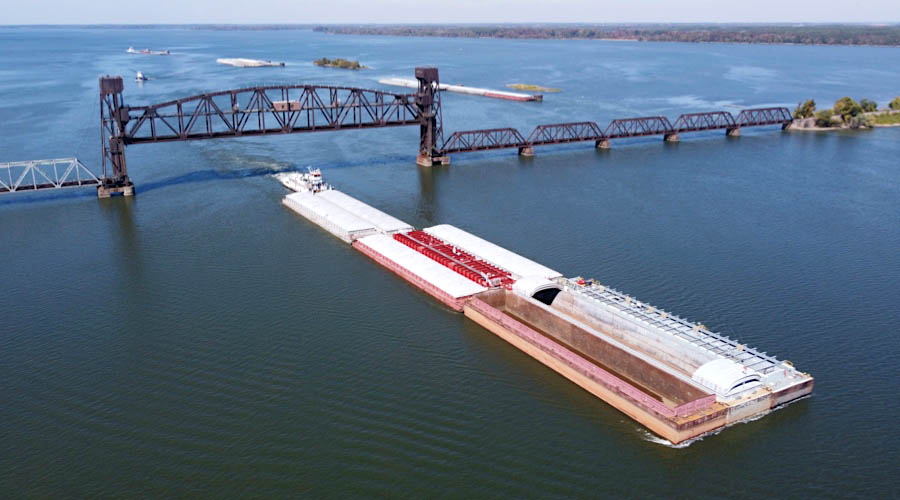
Decatur, Al / Oct 2022 / RWH
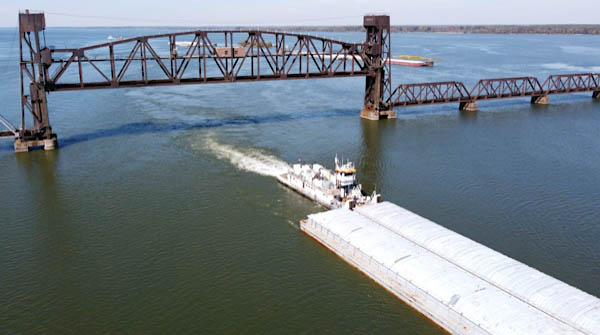
Decatur, Al / Oct 2022 / RWH
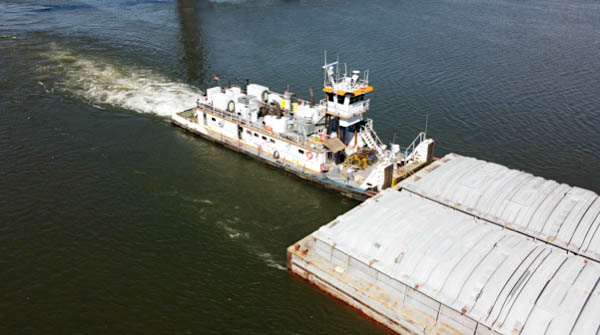
Decatur, Al / Oct 2022 / RWH
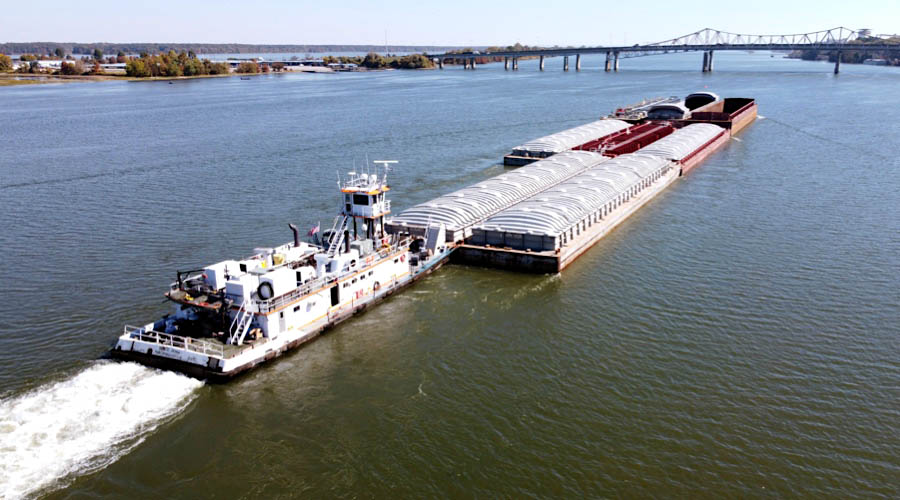
Decatur, Al / Oct 2022 / RWH
Publications

collection
Lagniappe



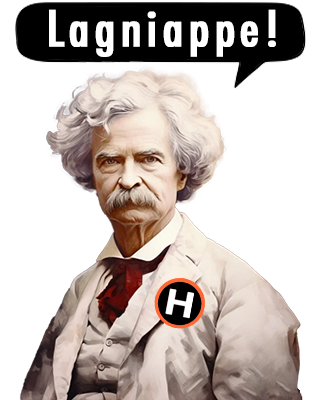
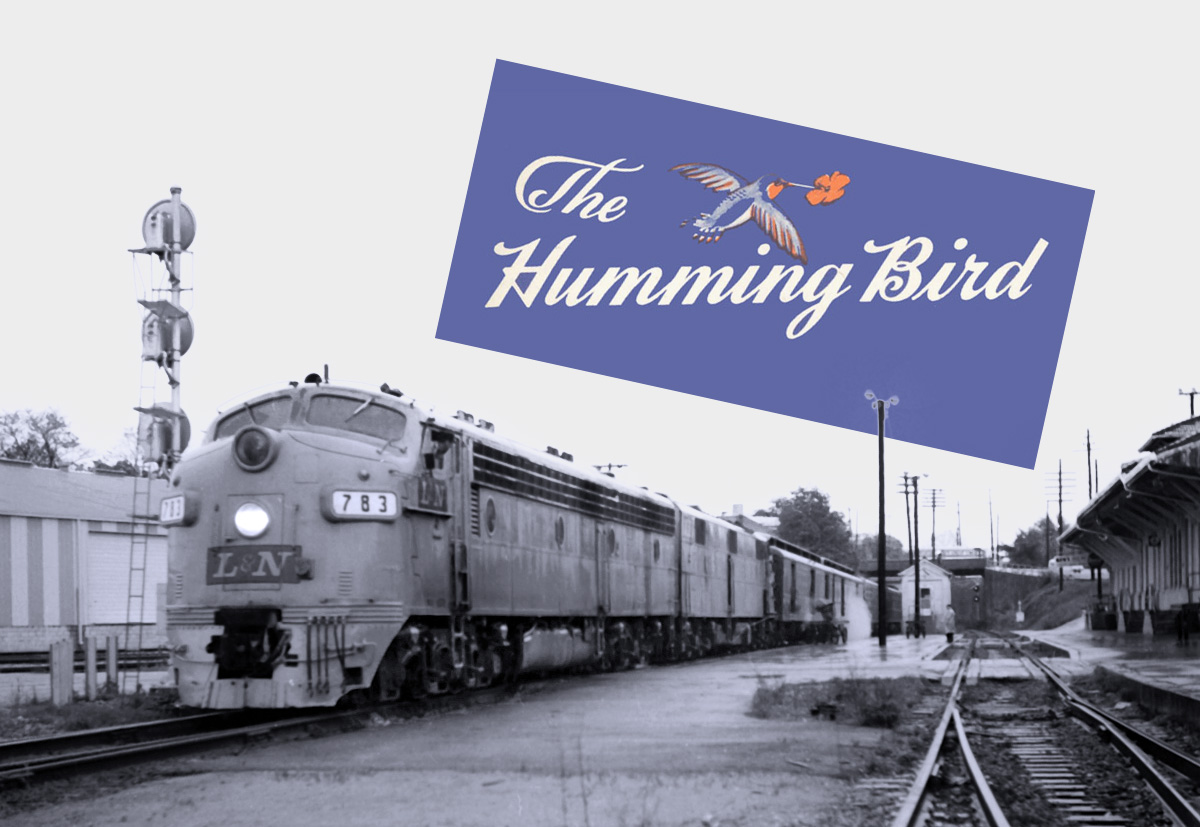
Number Five Hums at Decatur
Jun 1968 / image JCH artwork RWH
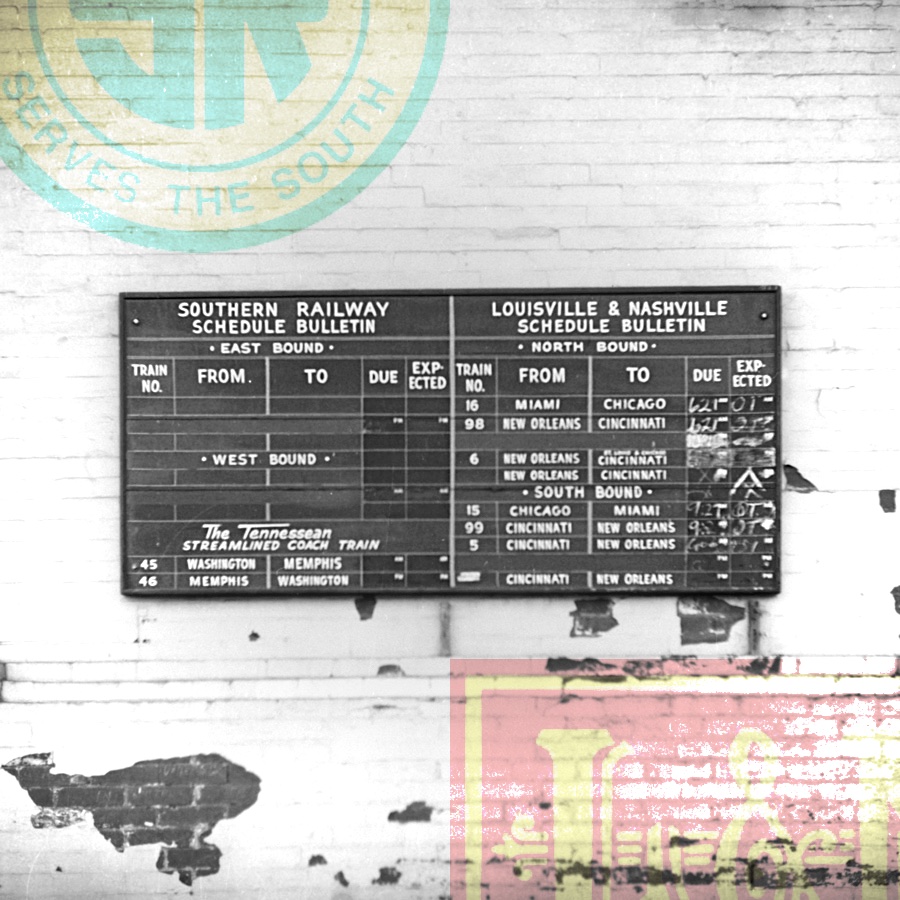
The Waning Years
image JCH artwork RWH
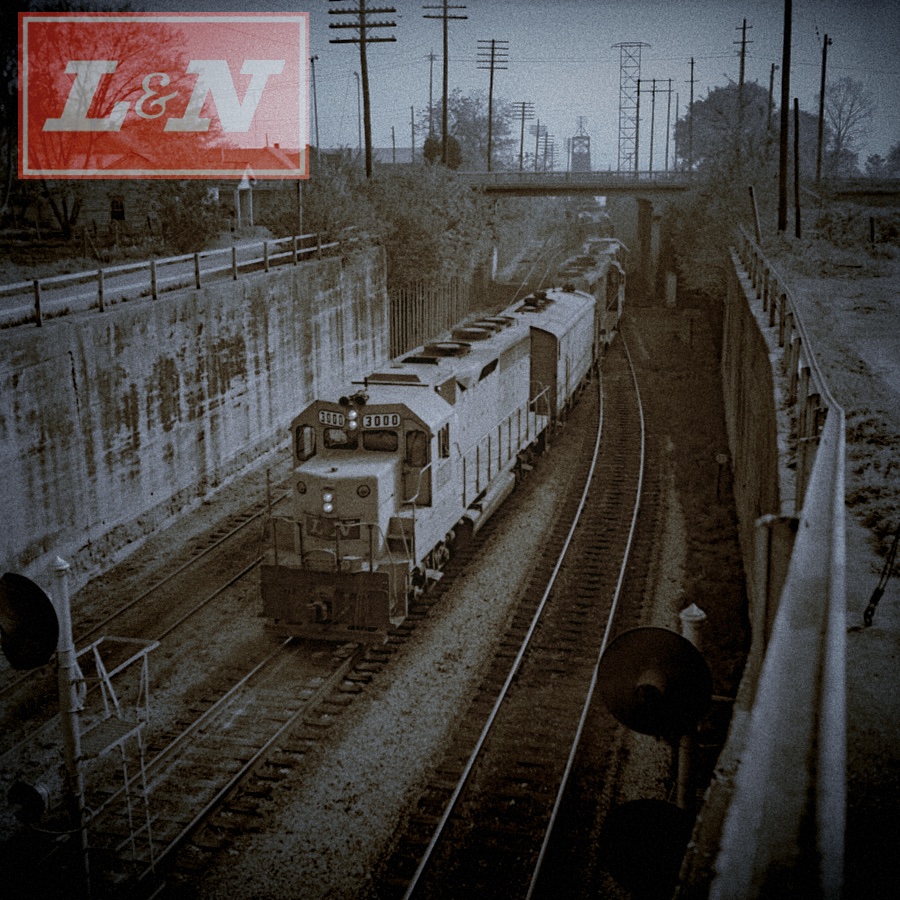
Comin' Off the River Bridge
Apr 1971 / image JCH artwork RWH
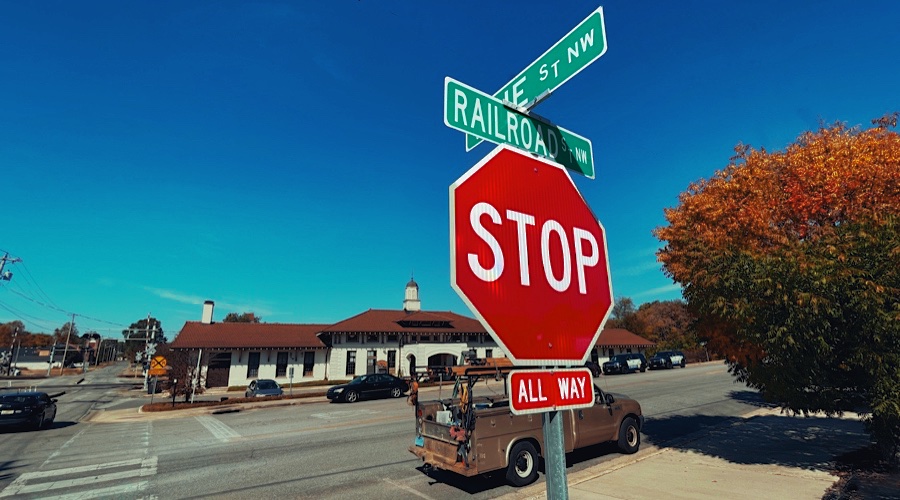
Over on the Right Side of Town
Decatur, Al / Oct 2022 / RWH
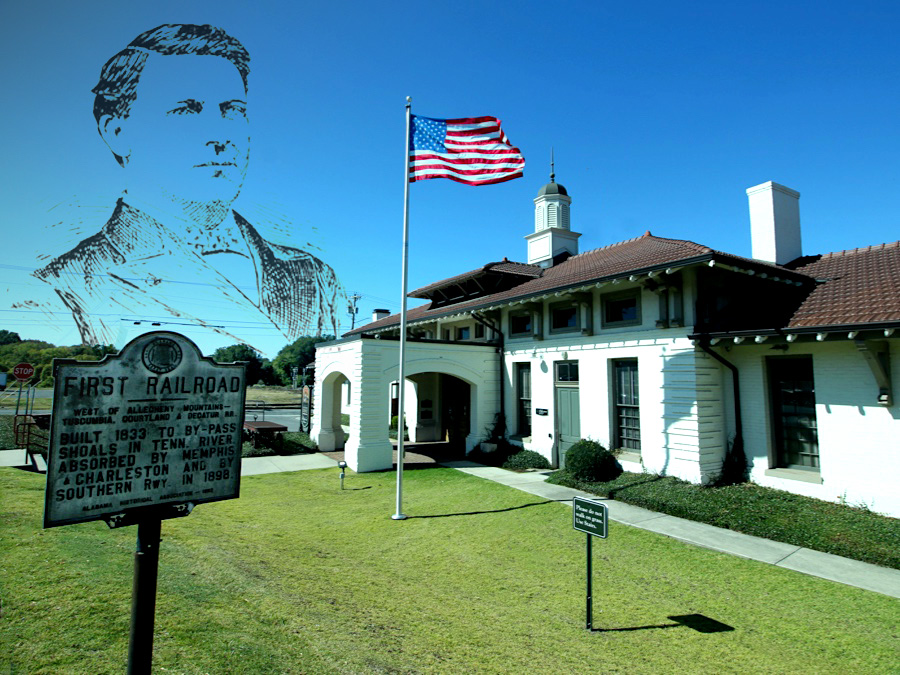
Mr. Milburn's Spanish Revival
Oct 2022 / image and artwork RWH
Links / Sources
- City of Decatur AL railroad museum page
- Decatur Parks and Recreation
- Wikipedia article for Decatur depot
- Encyclopedia of Alabama entry

